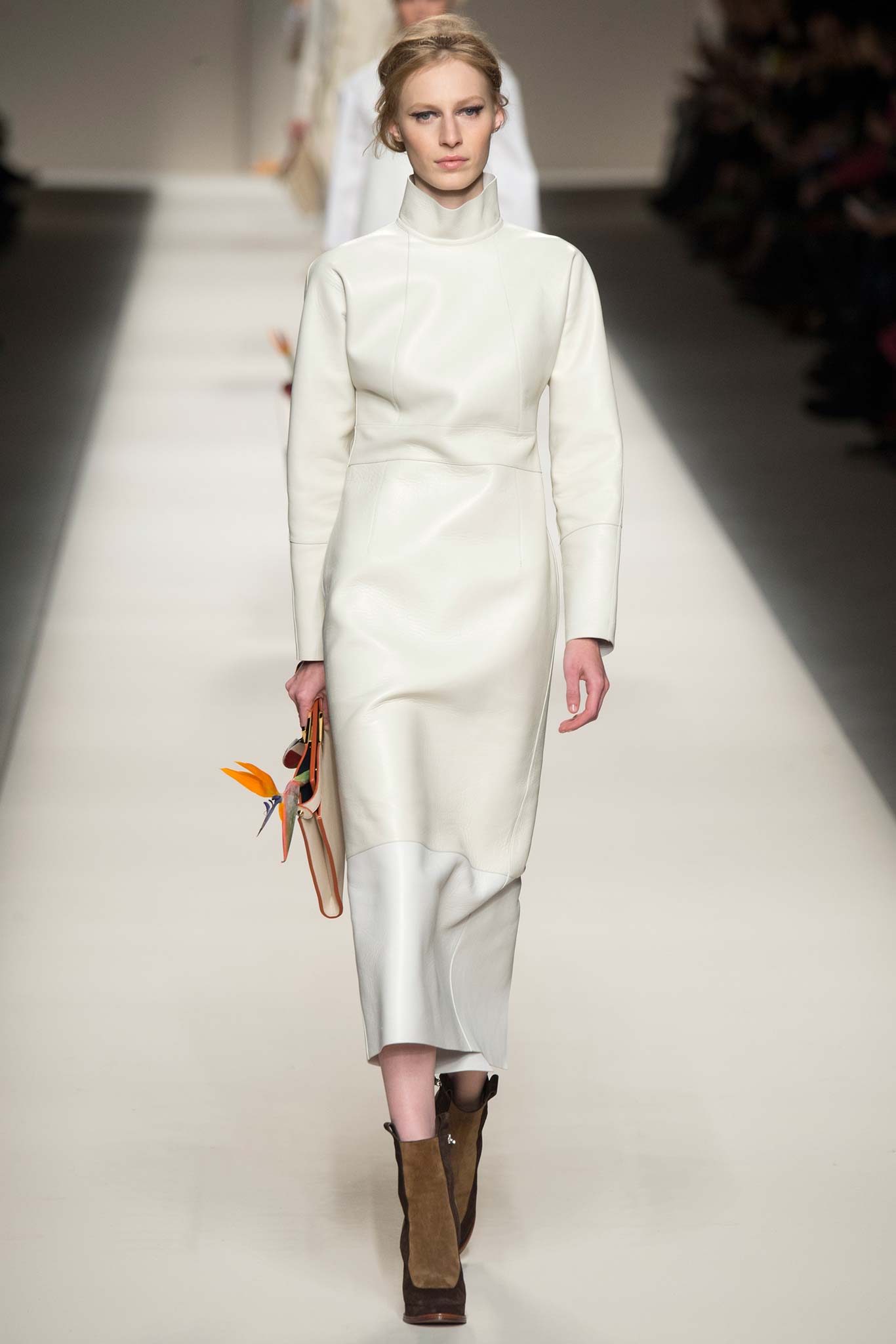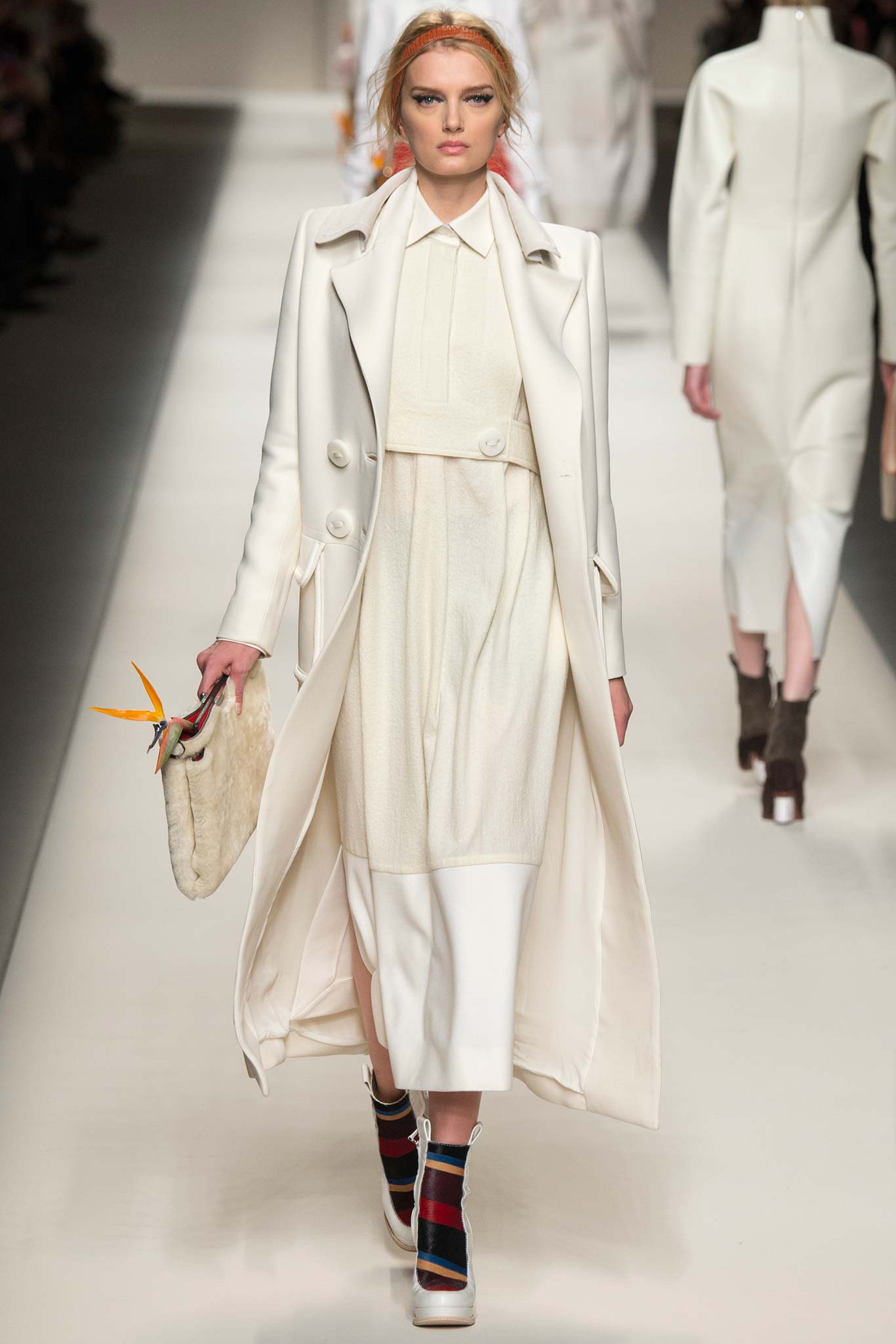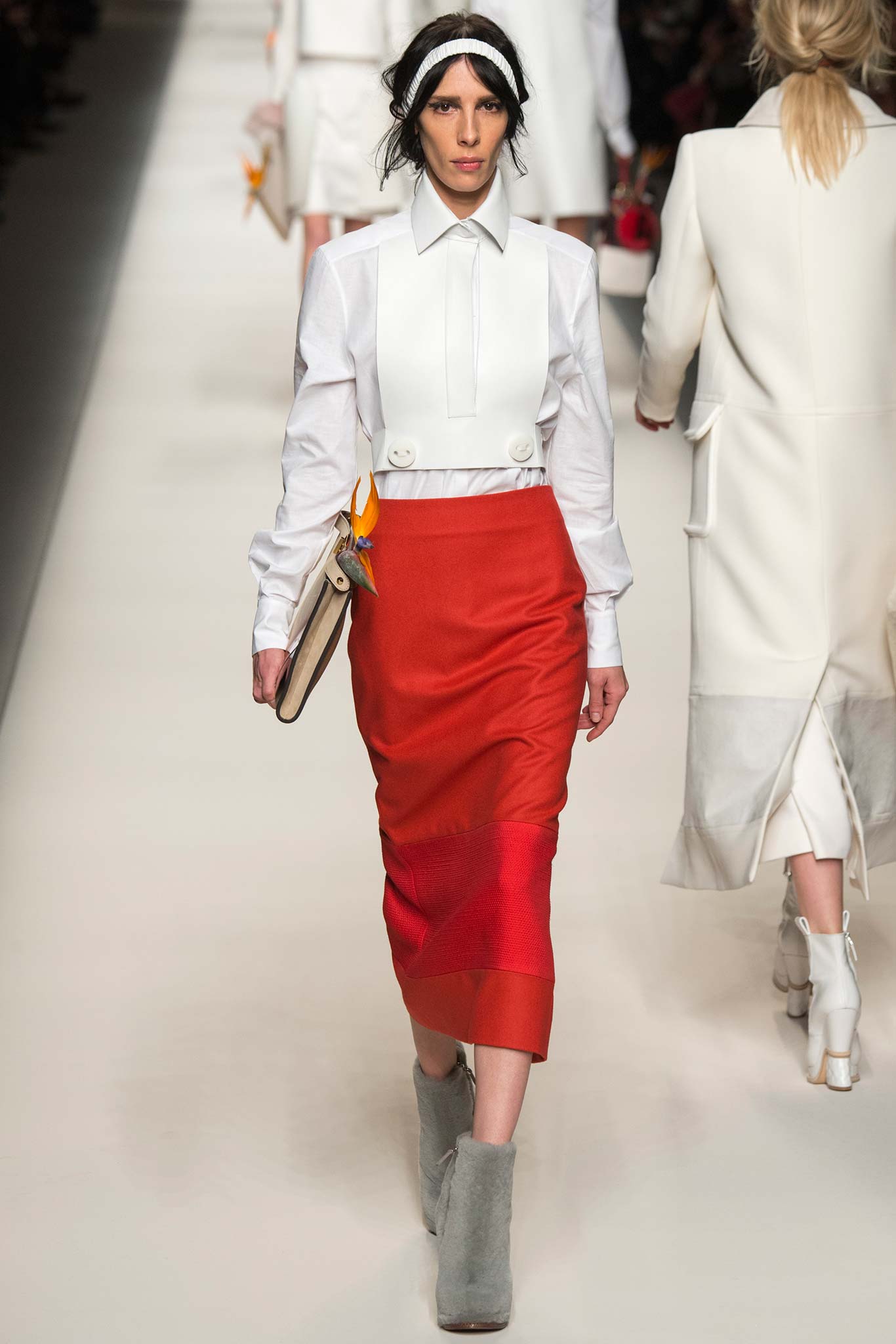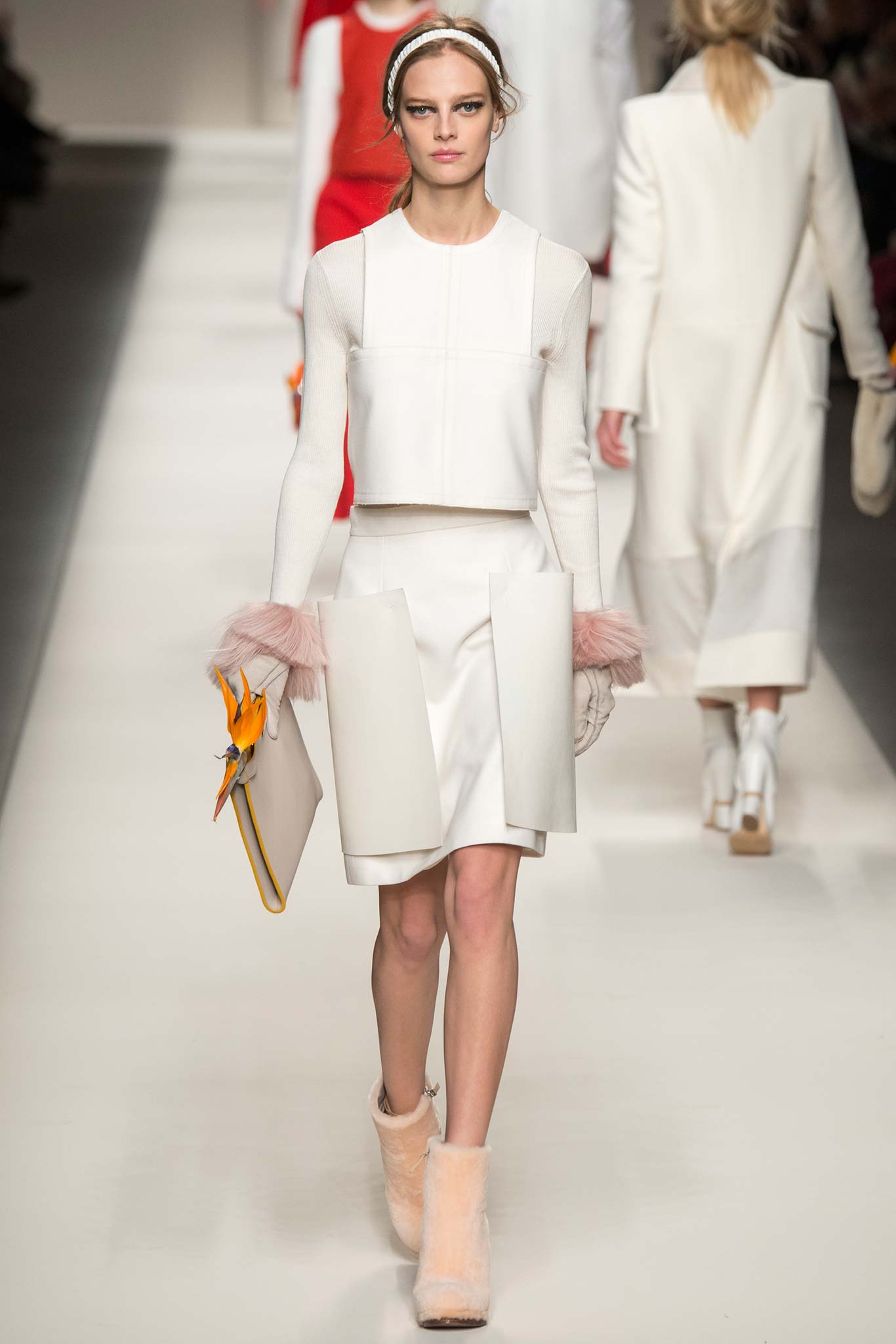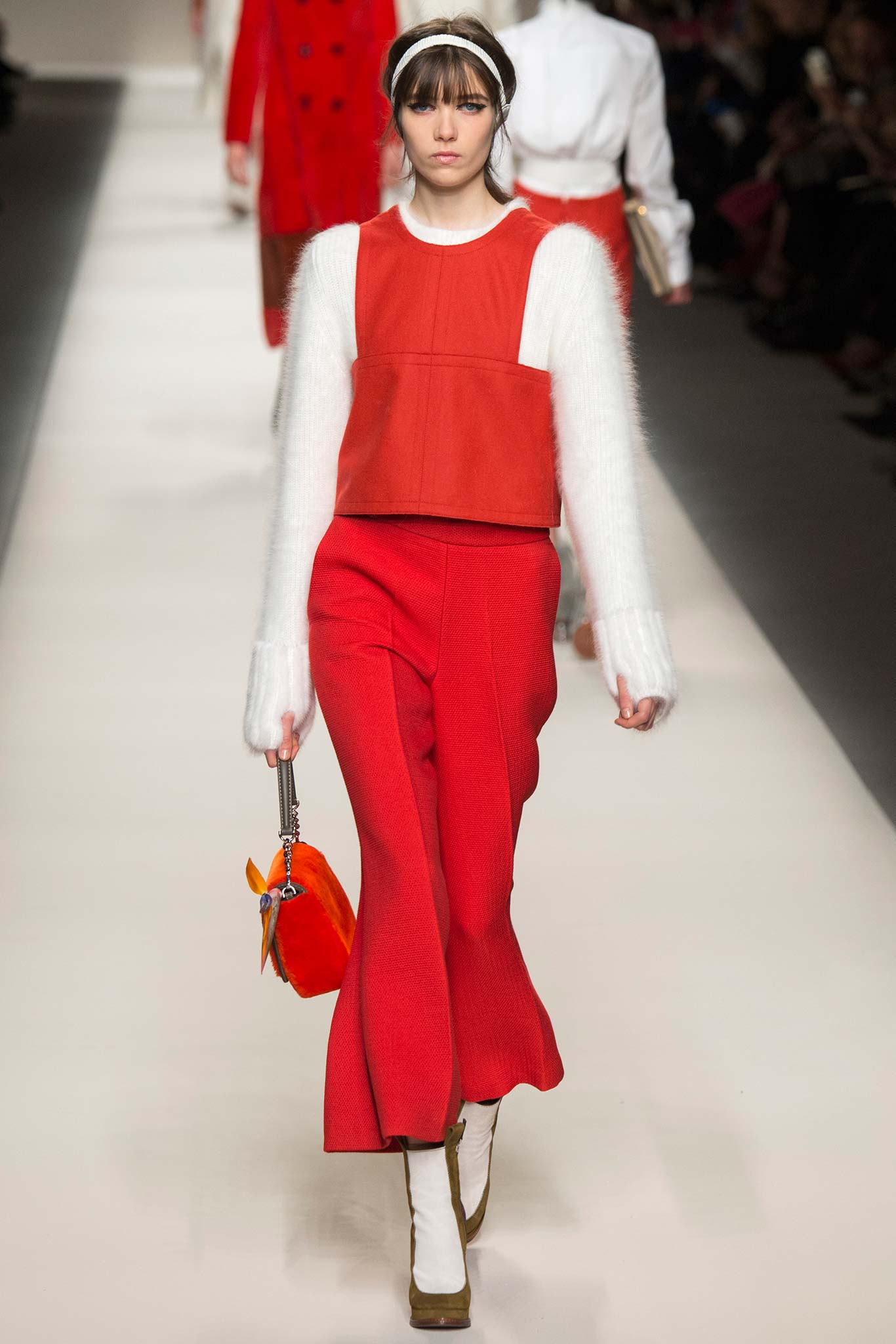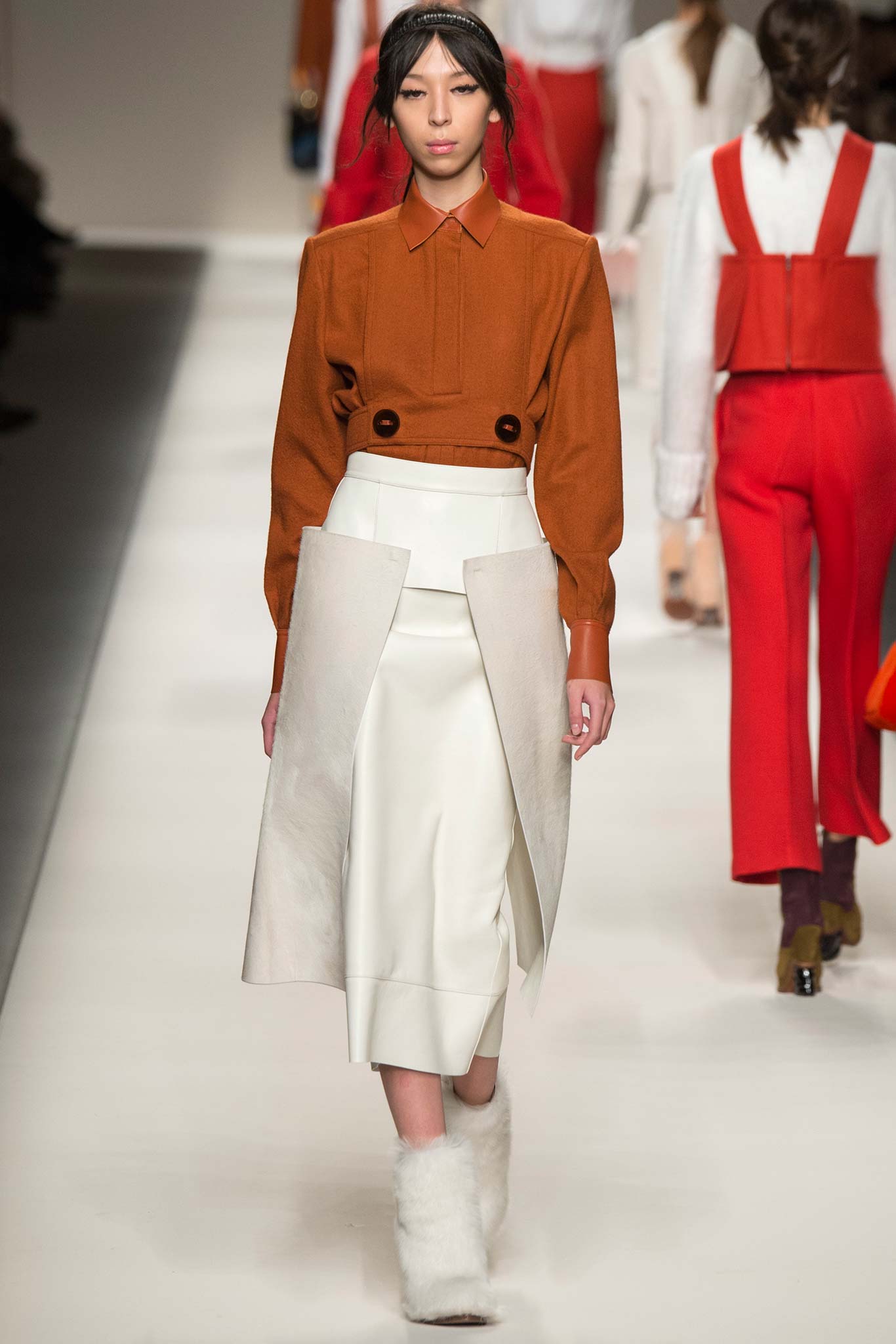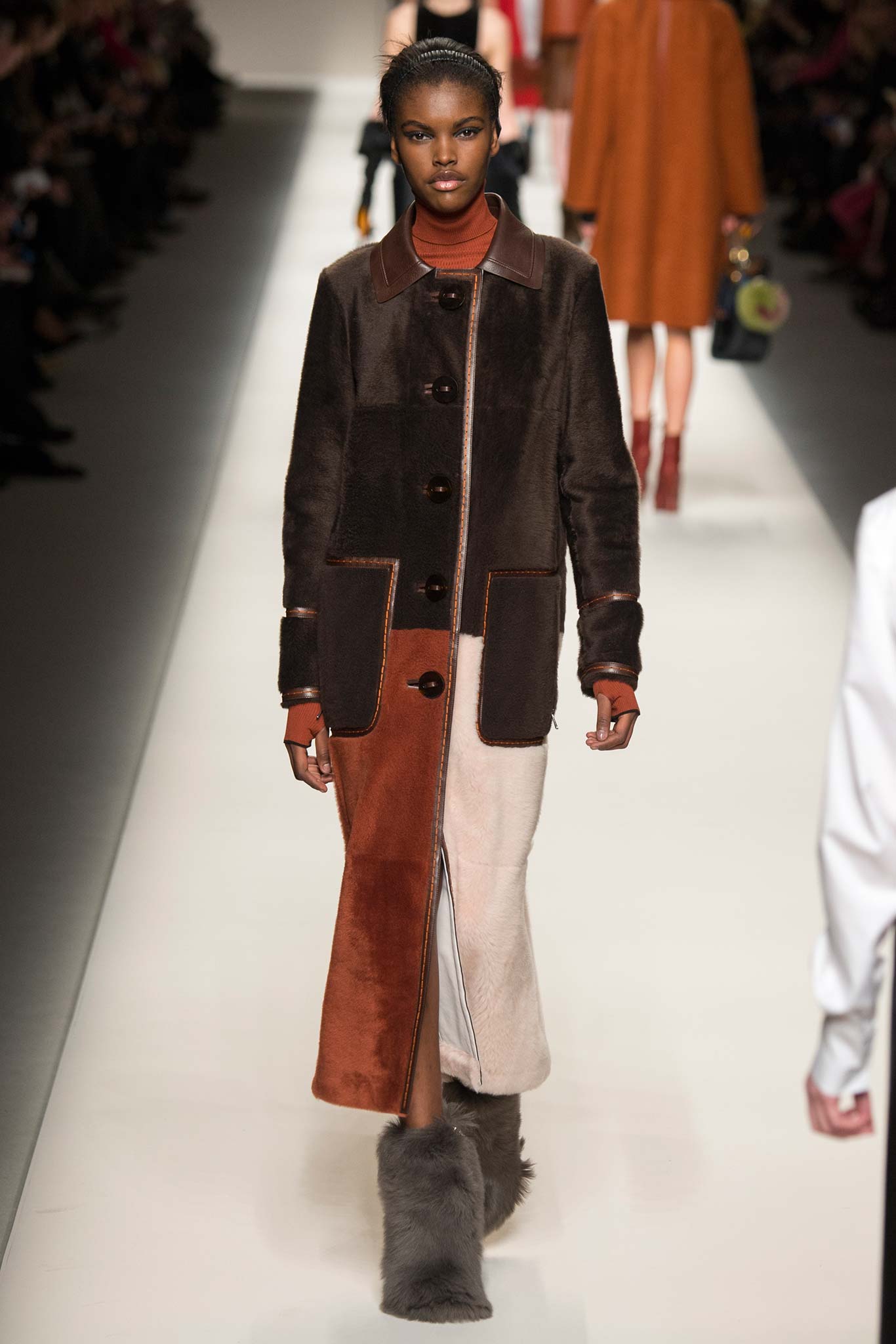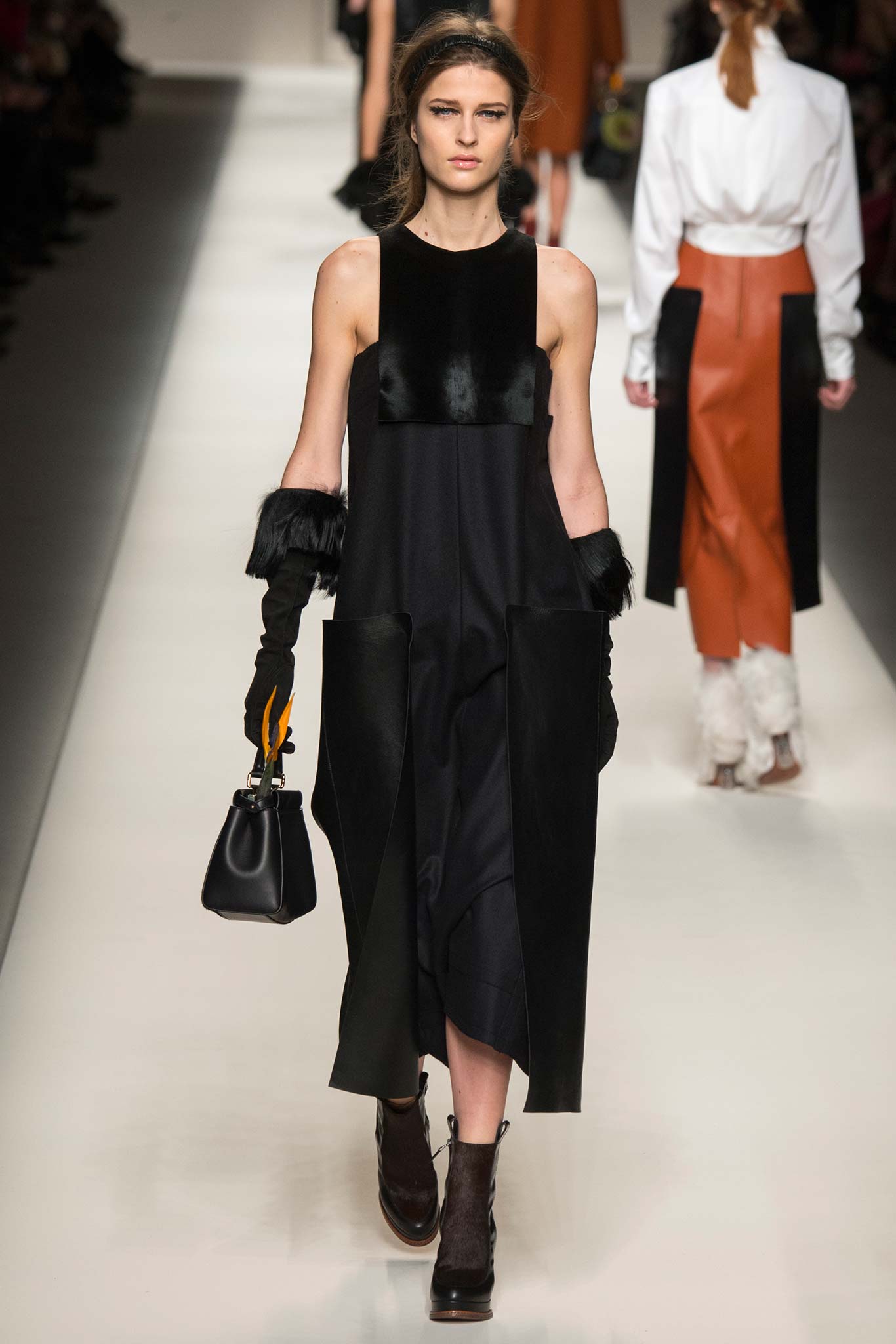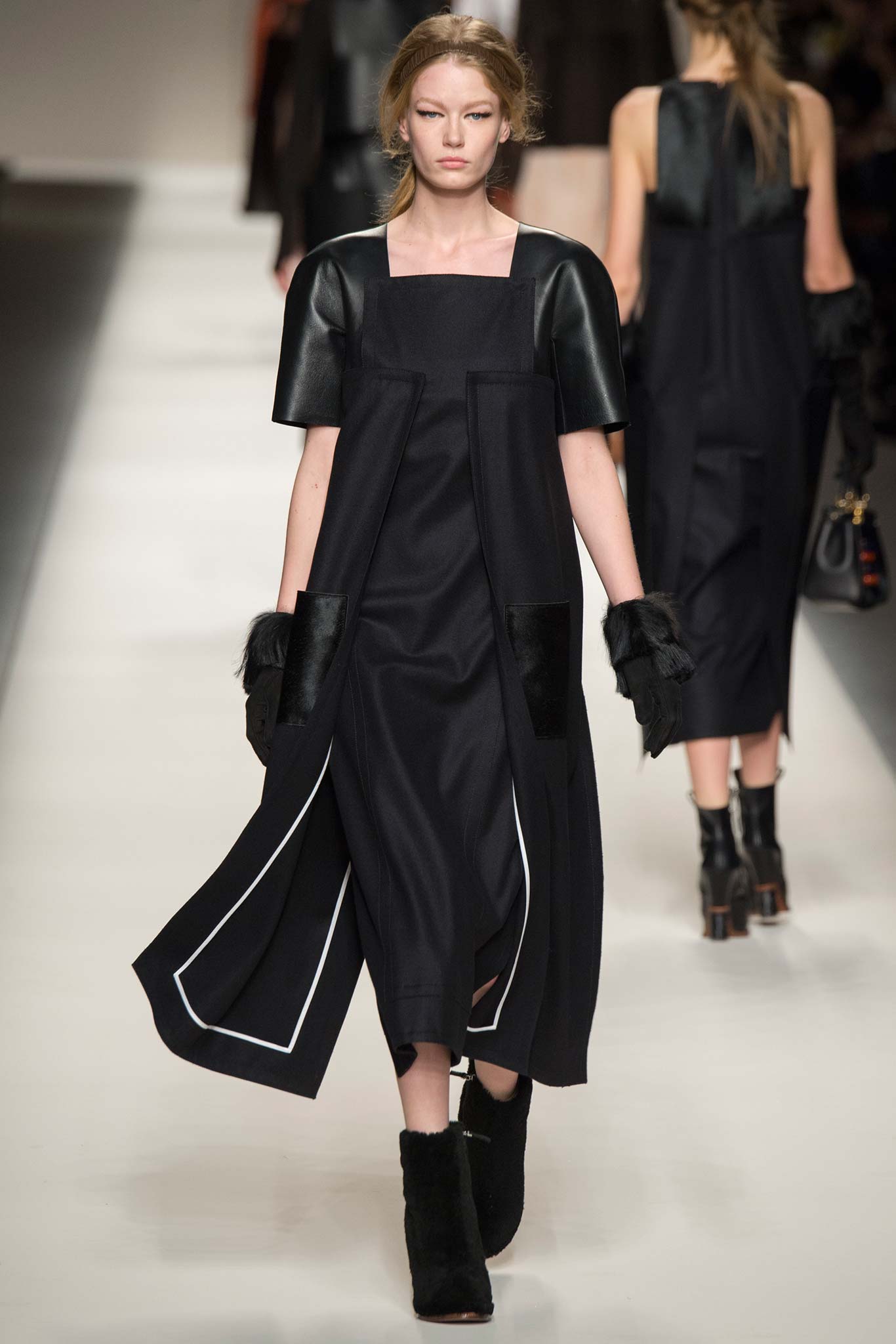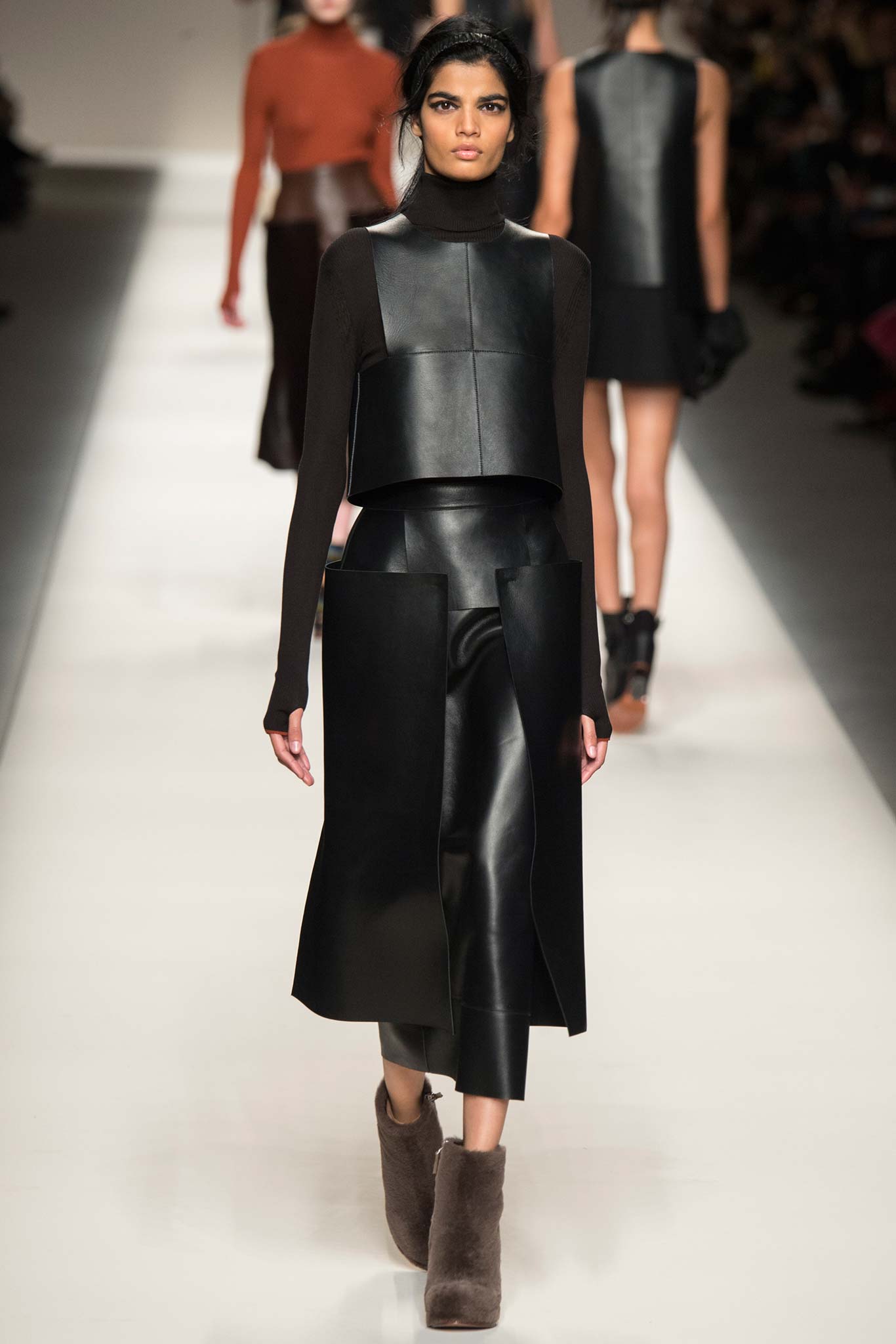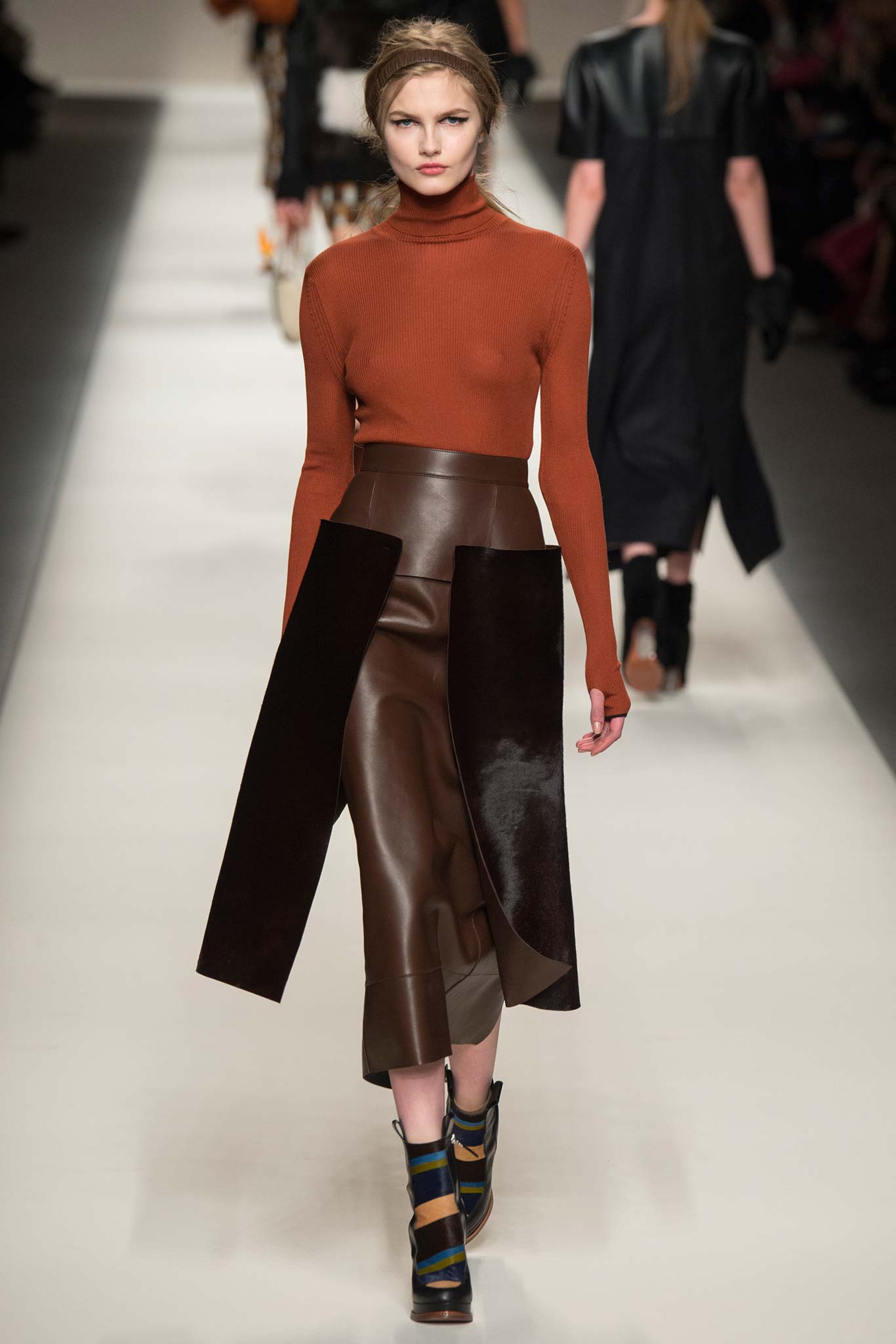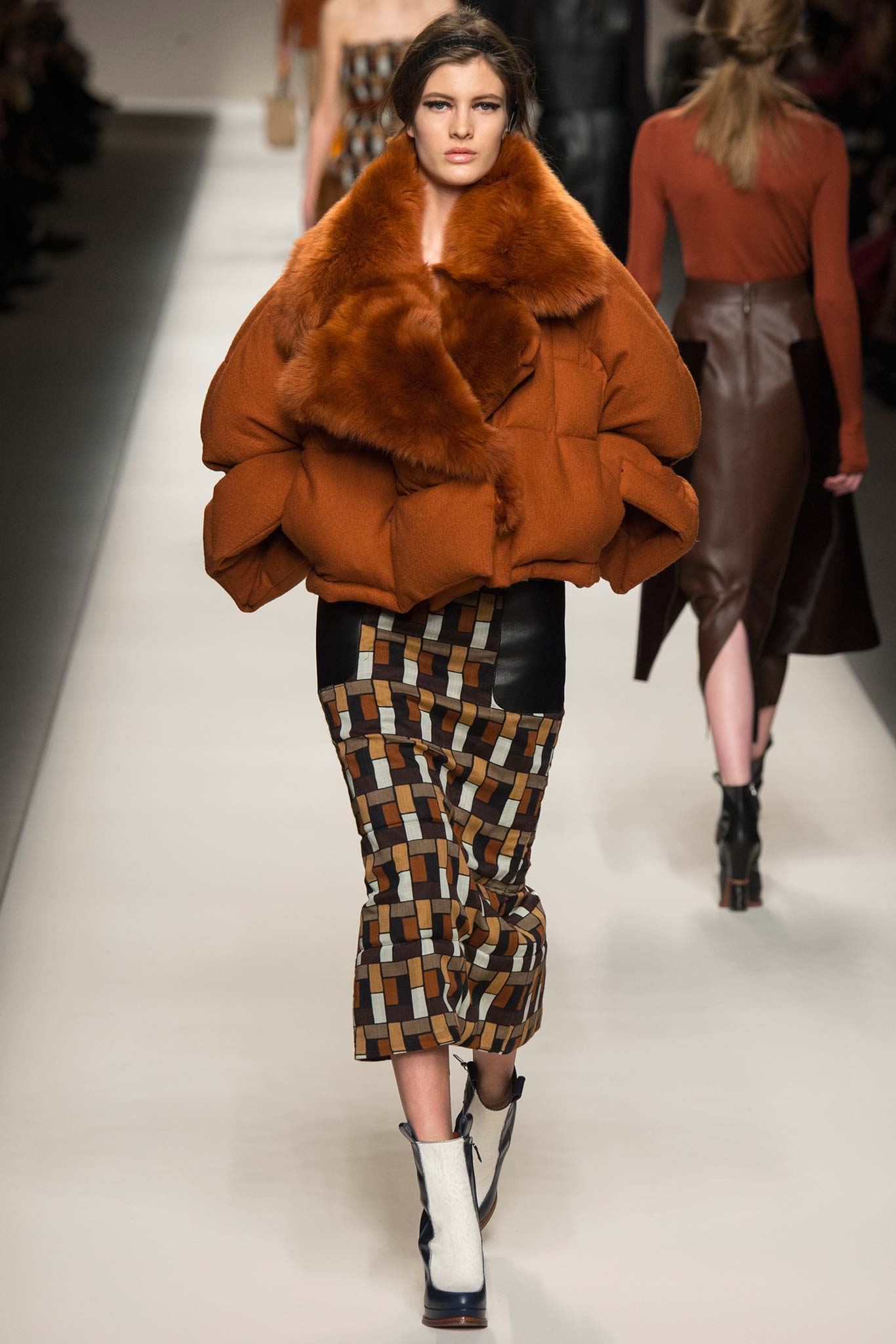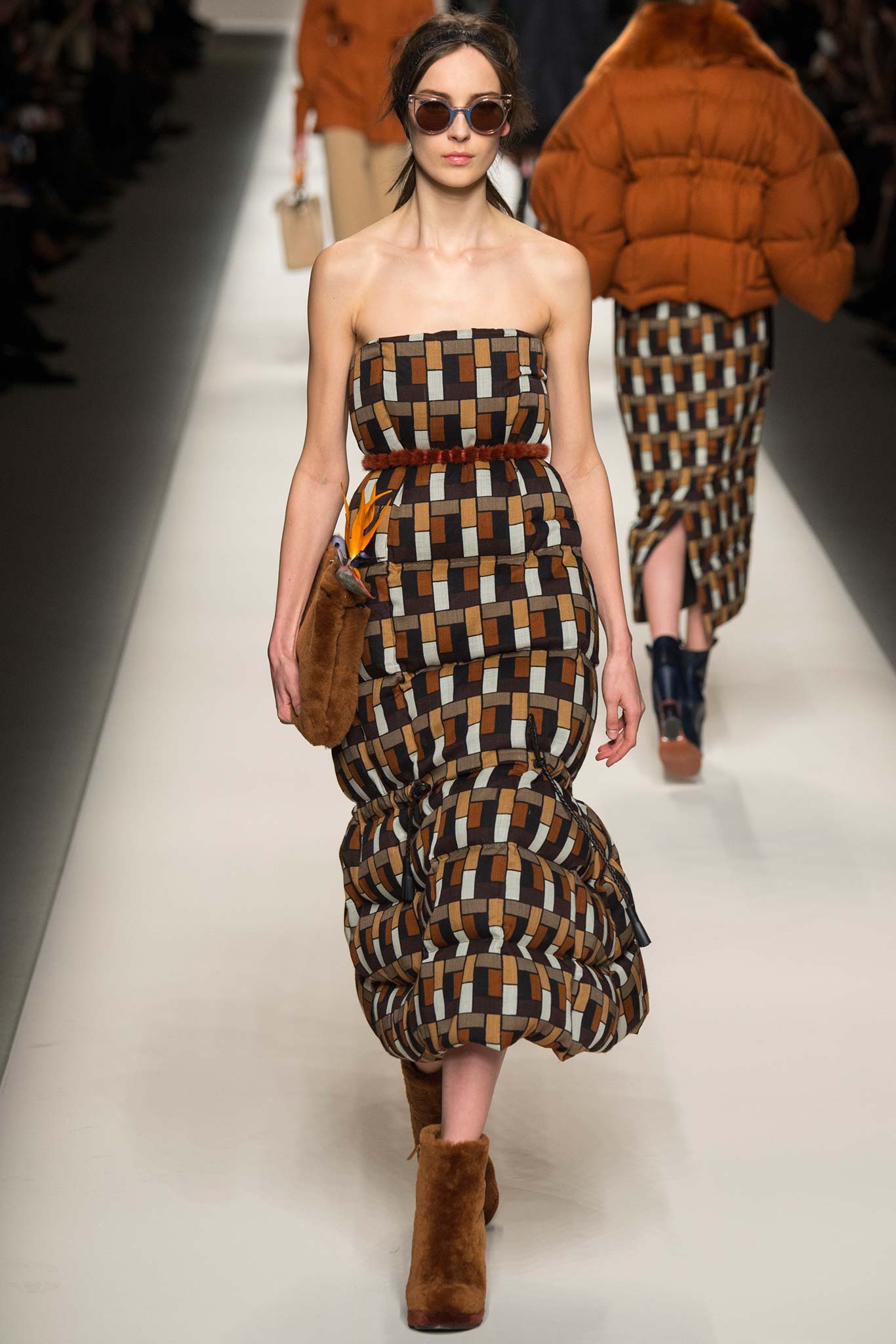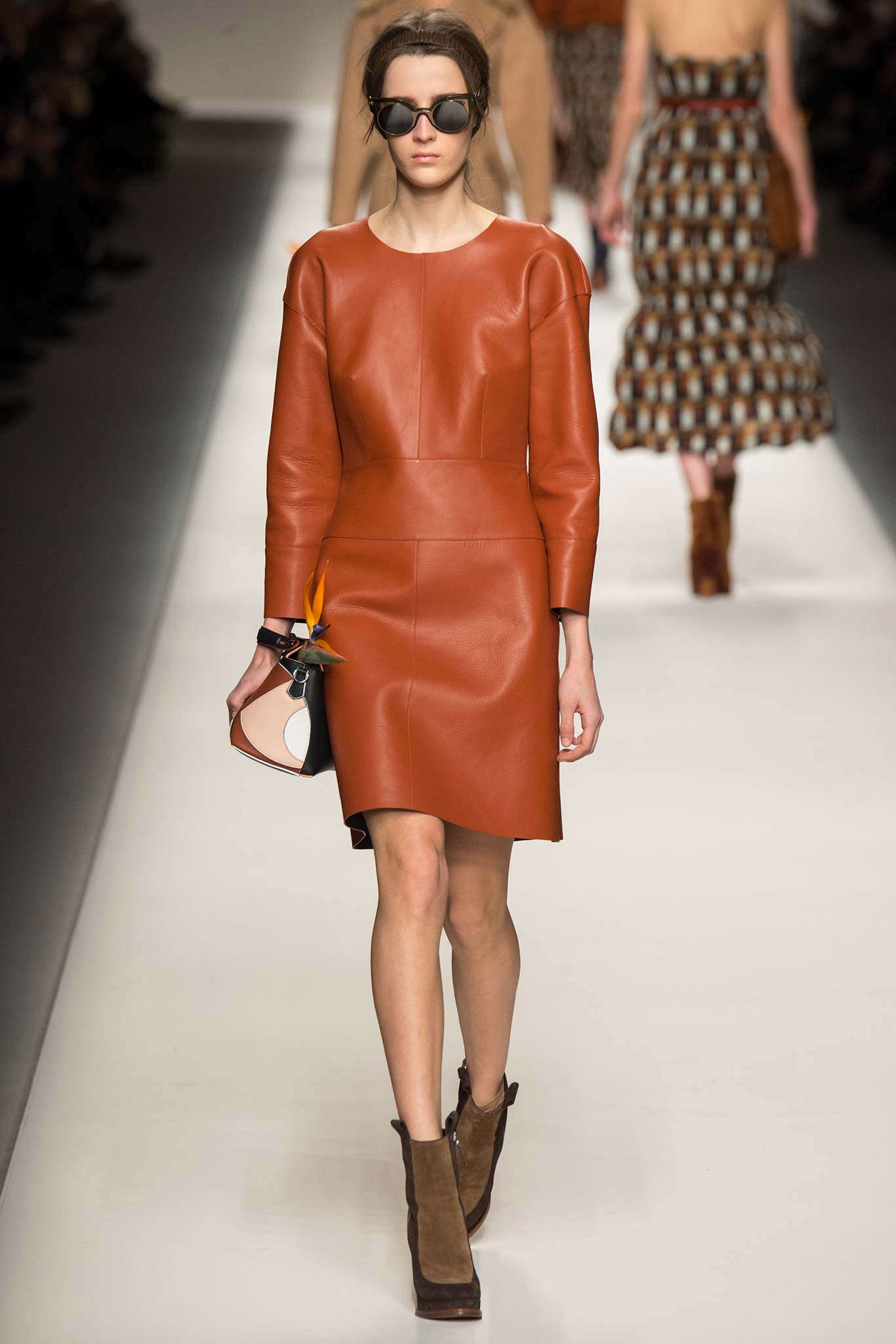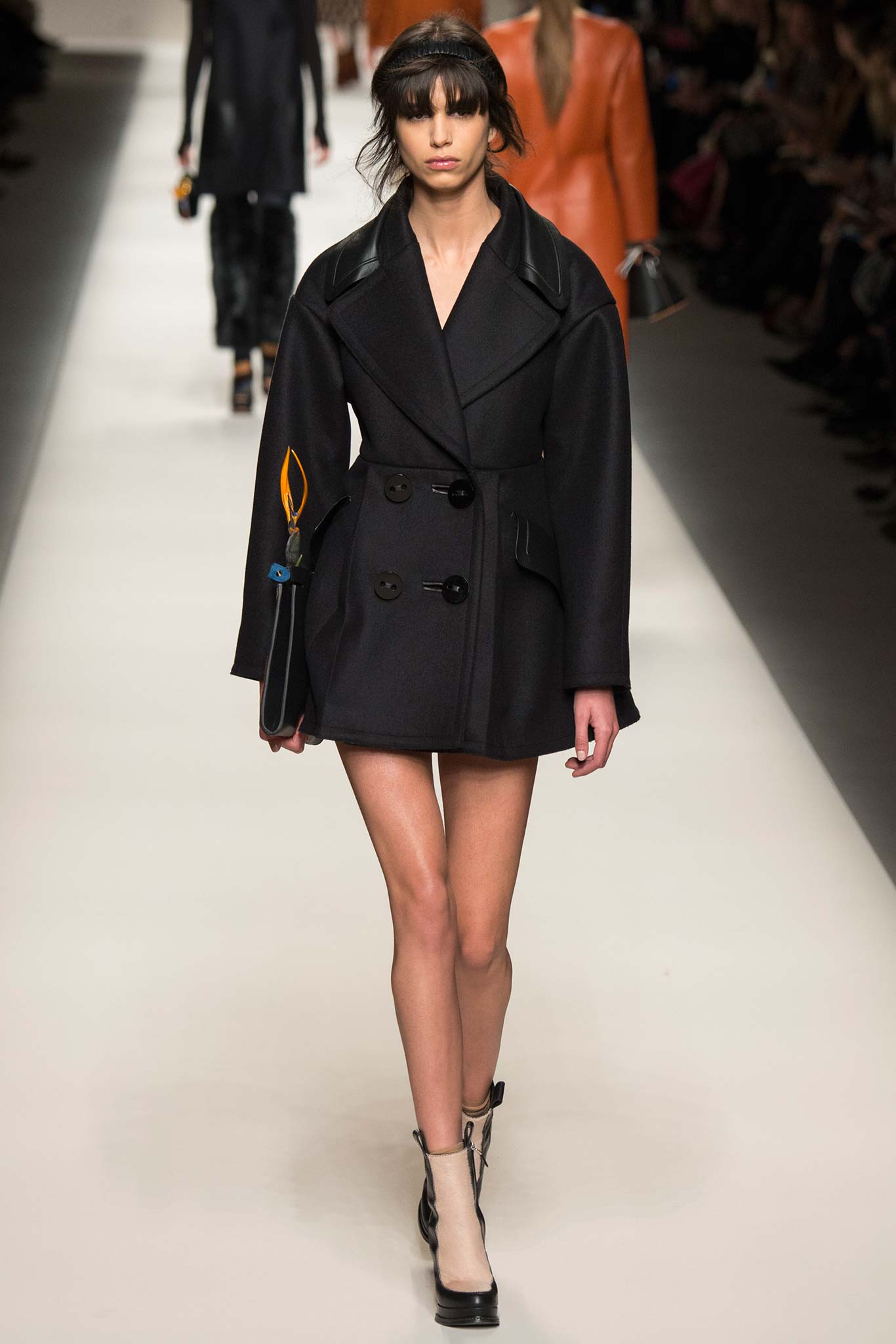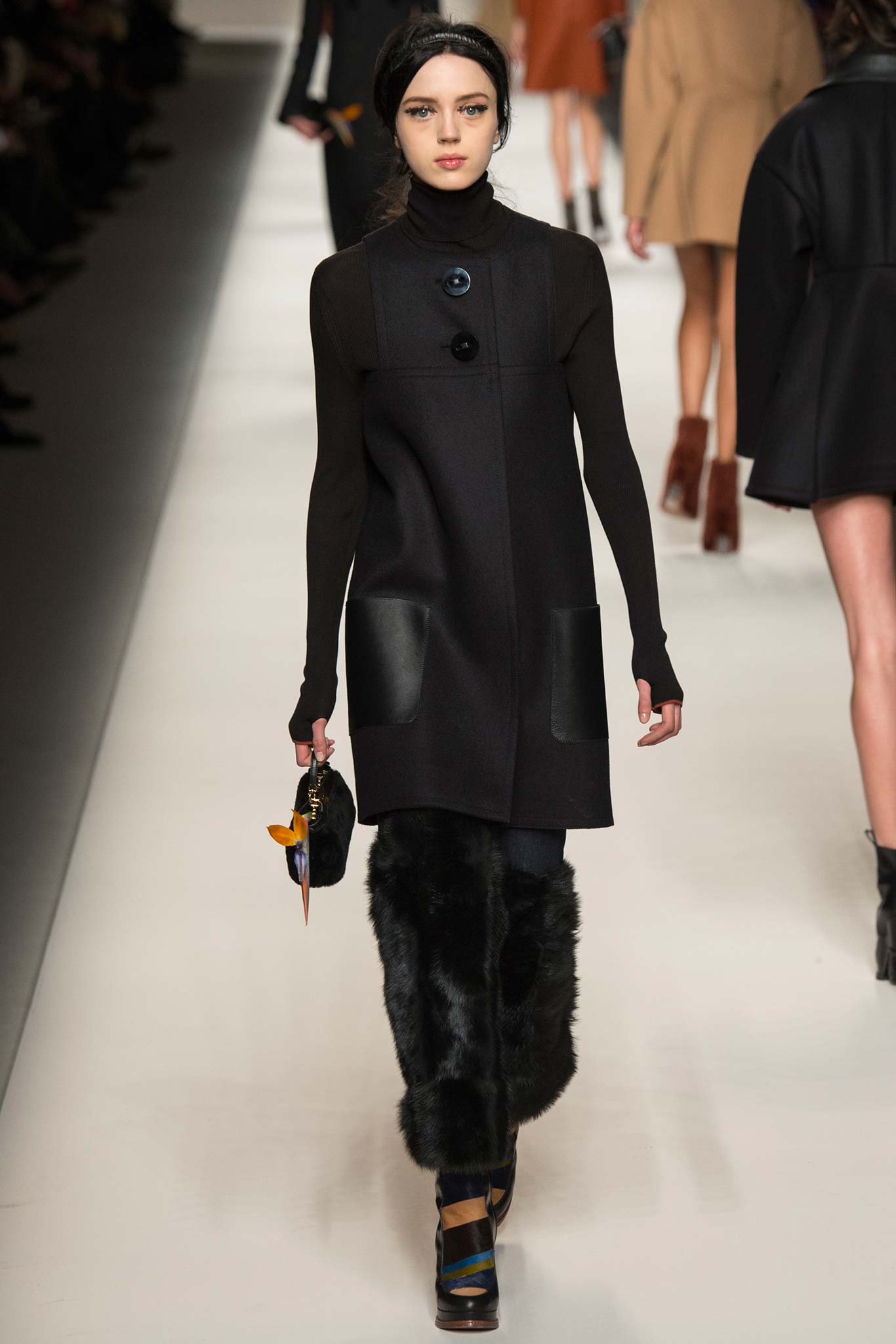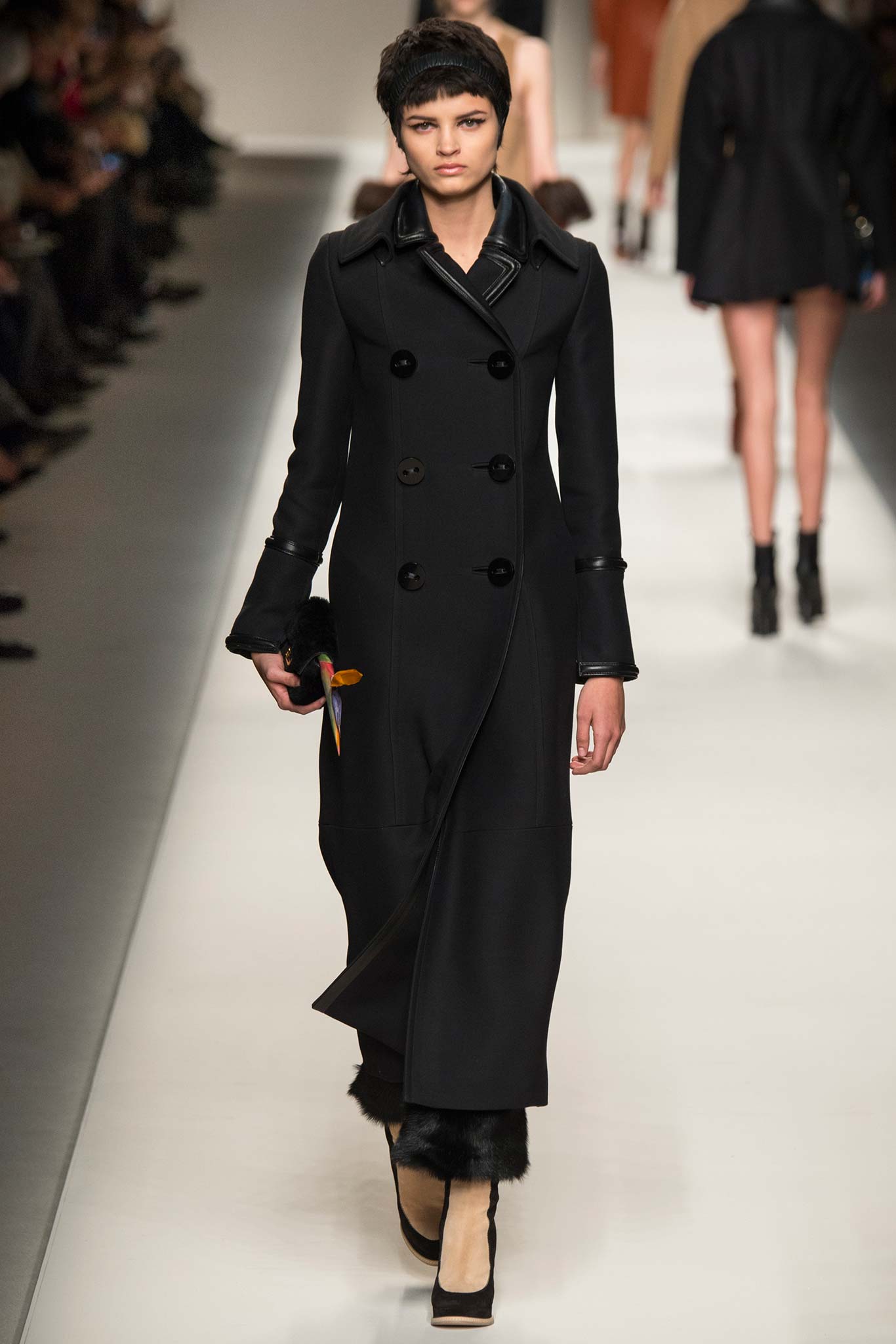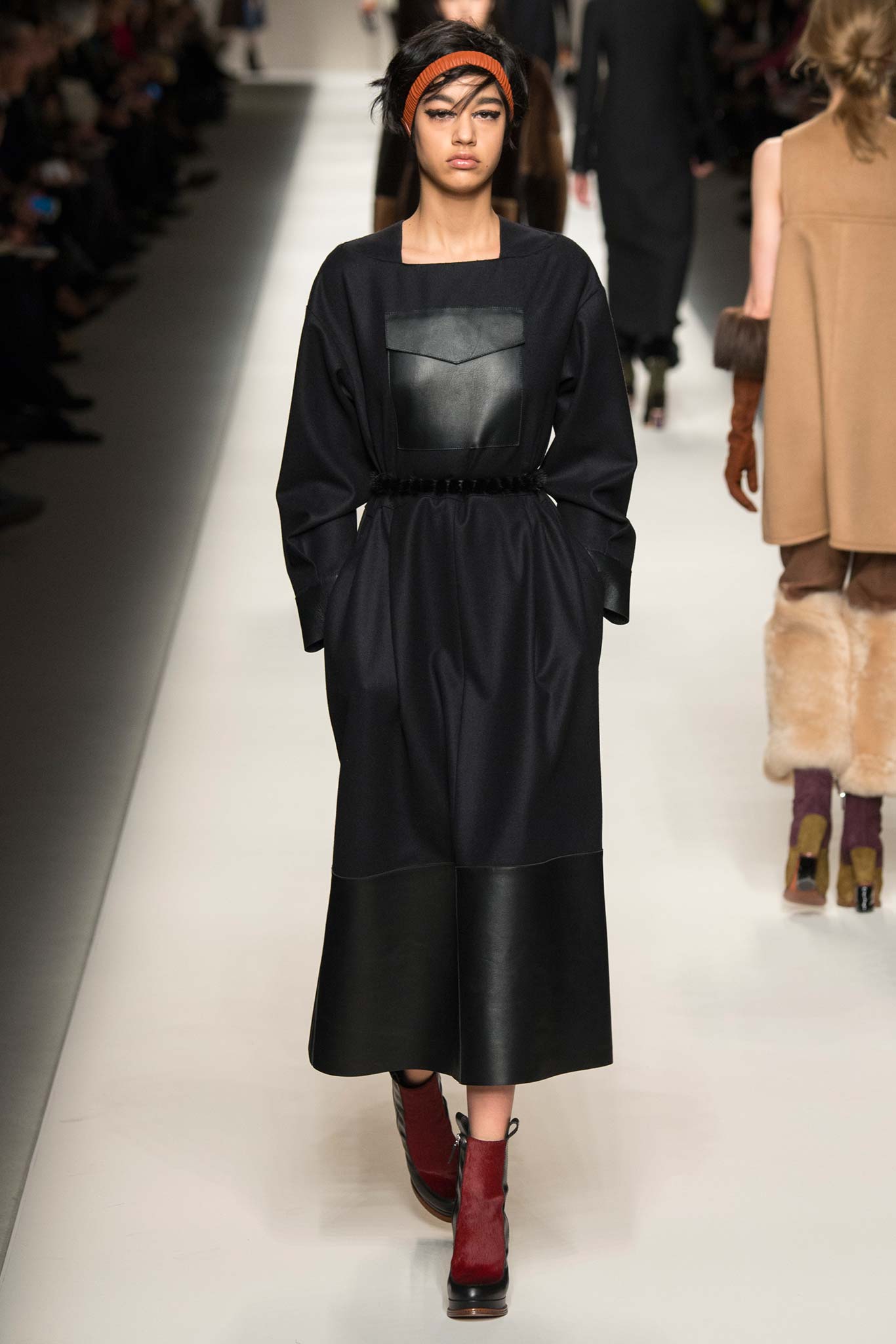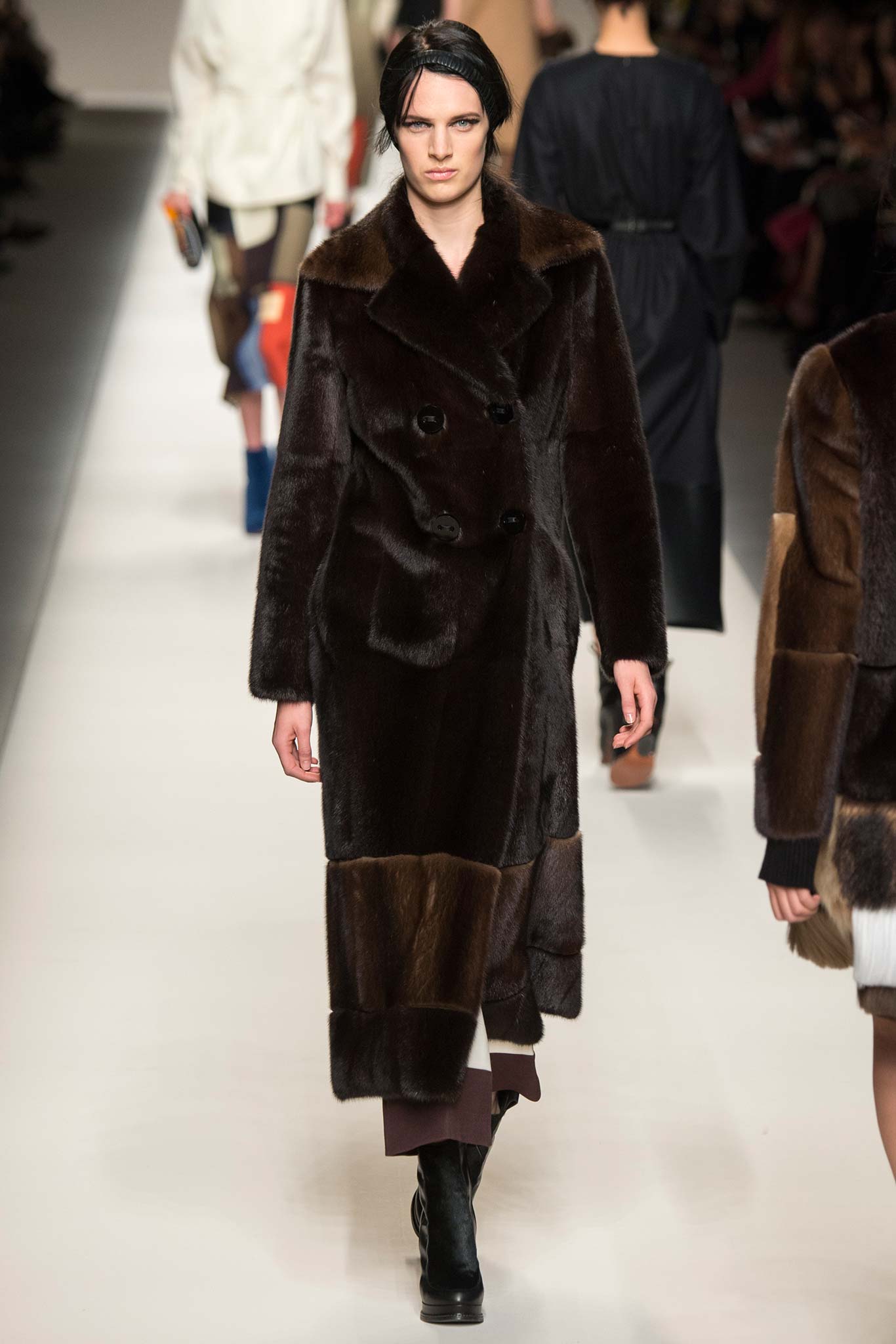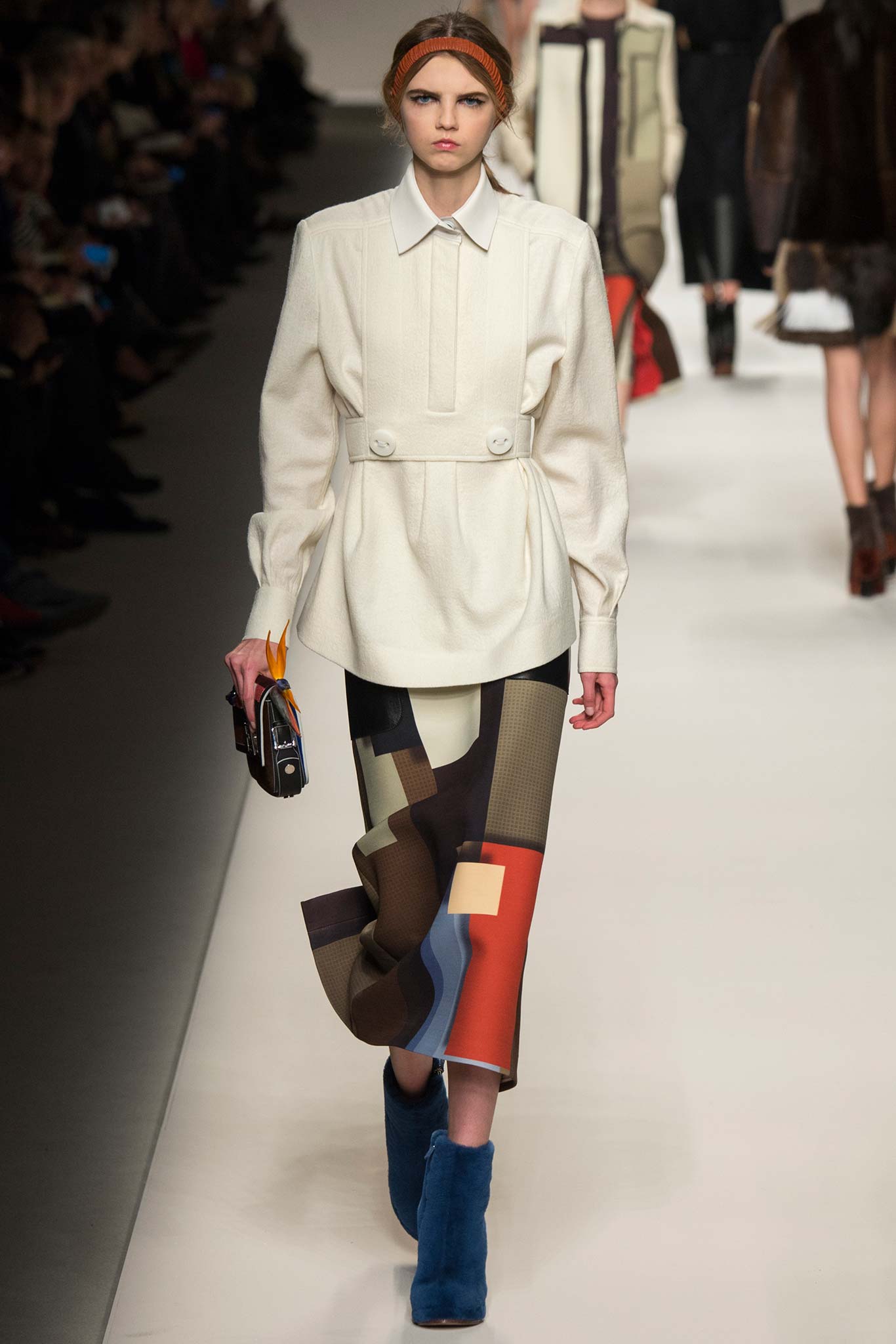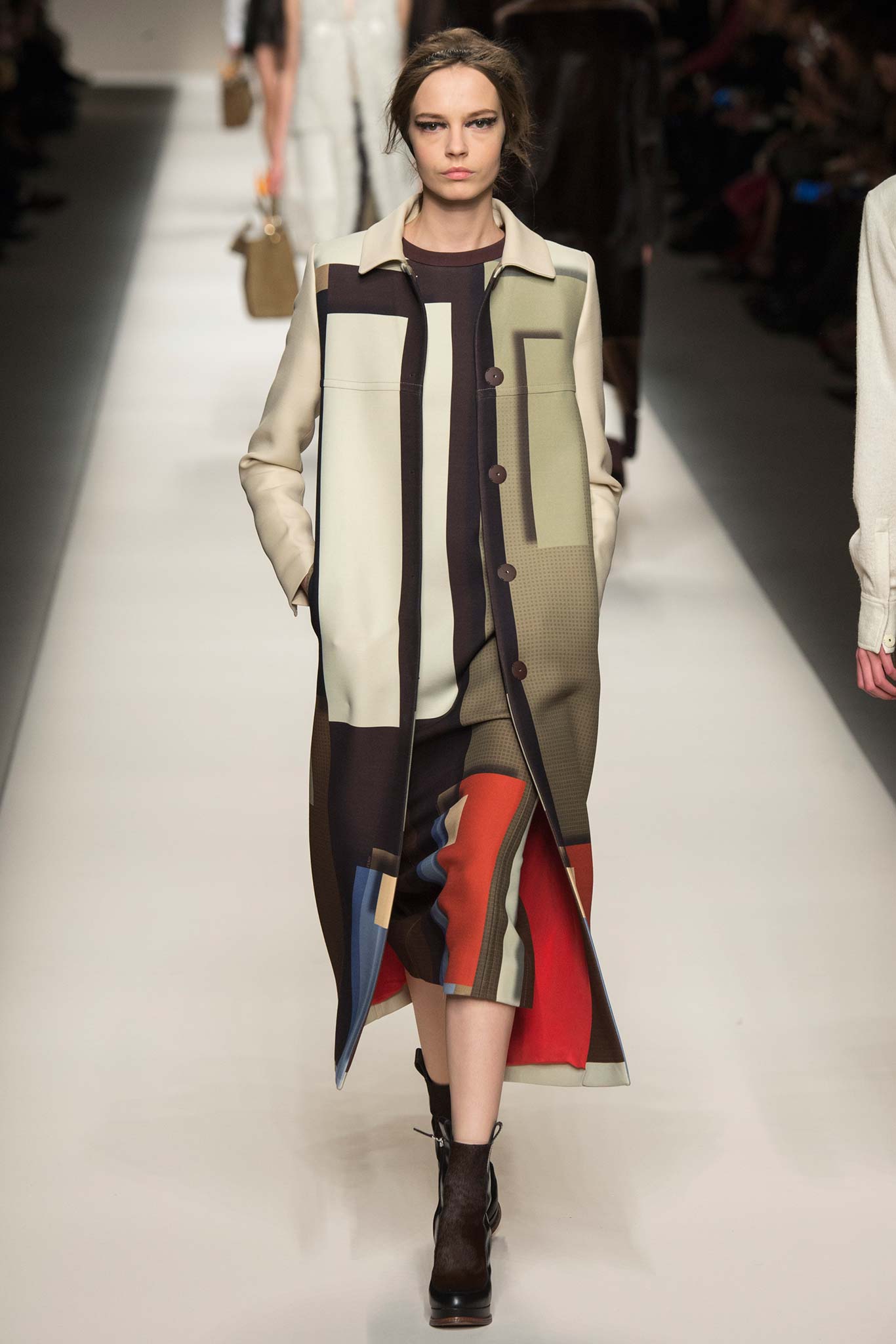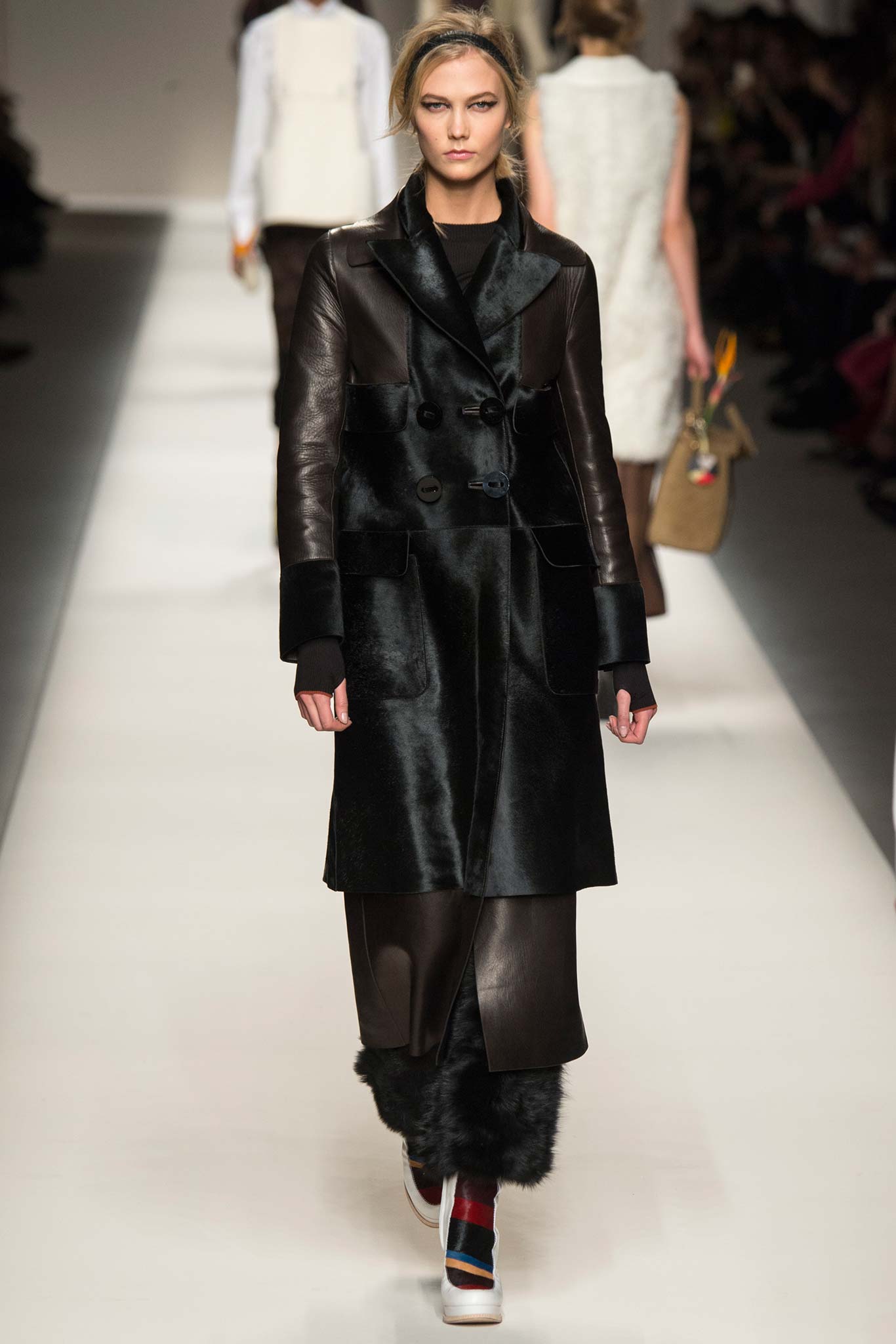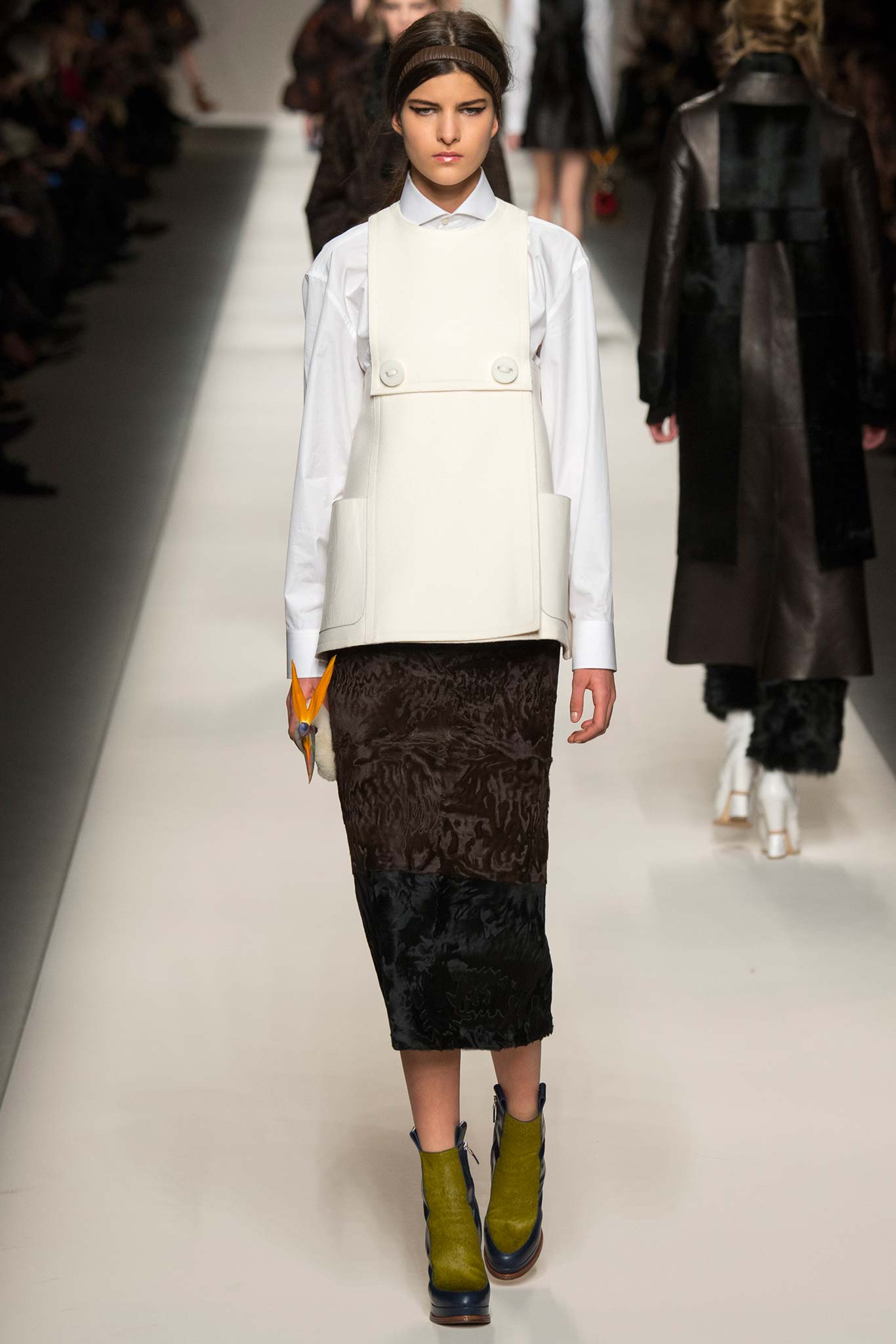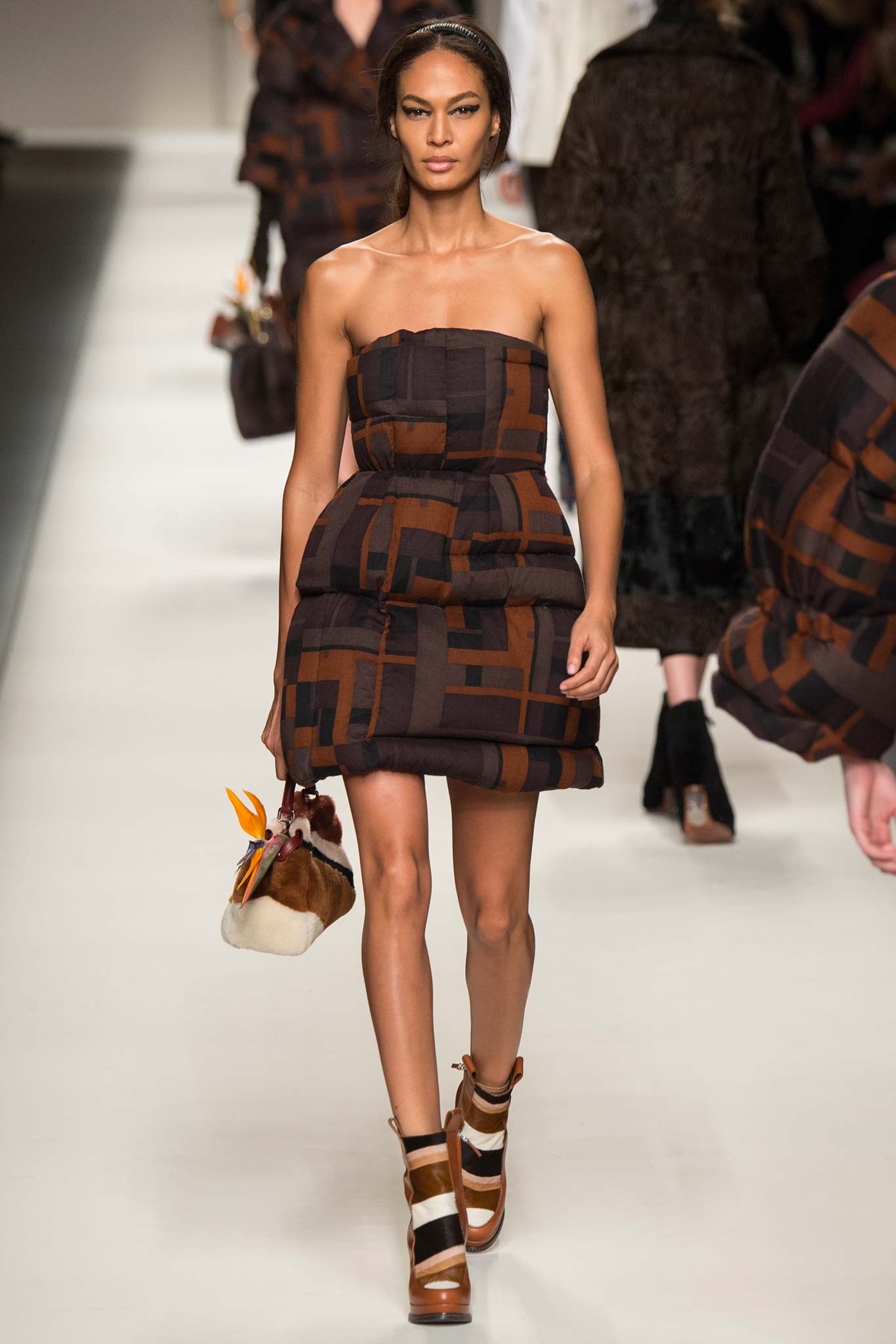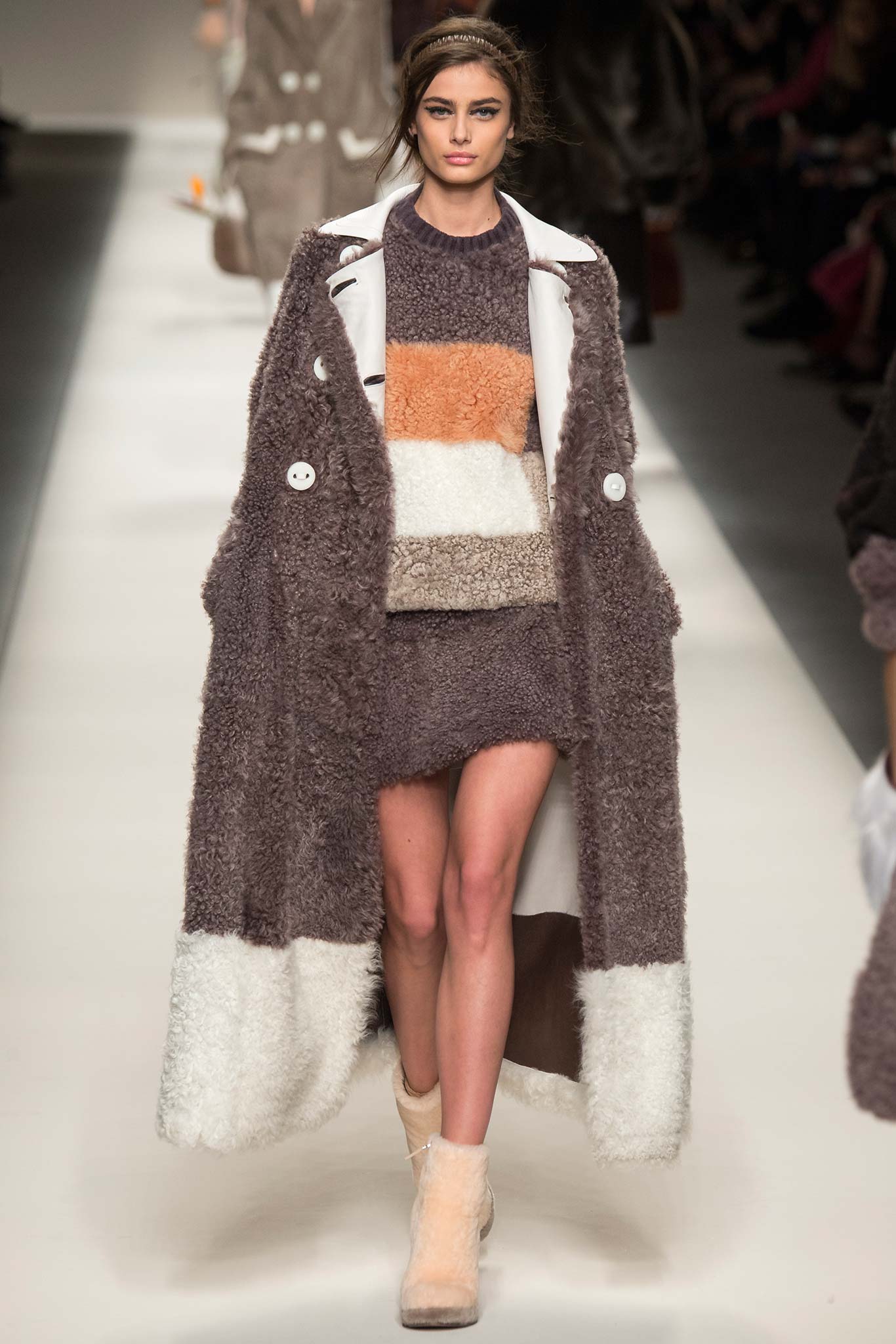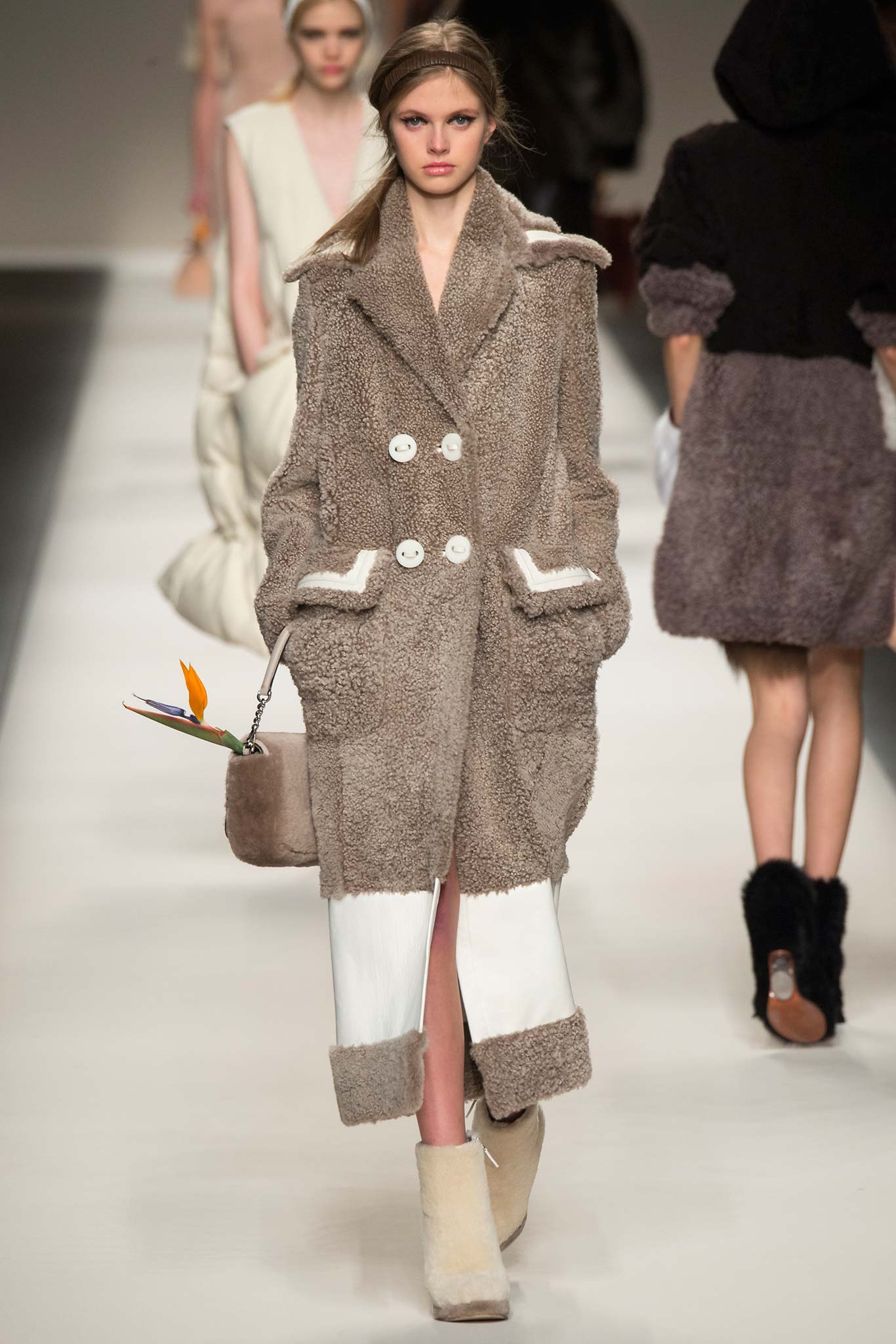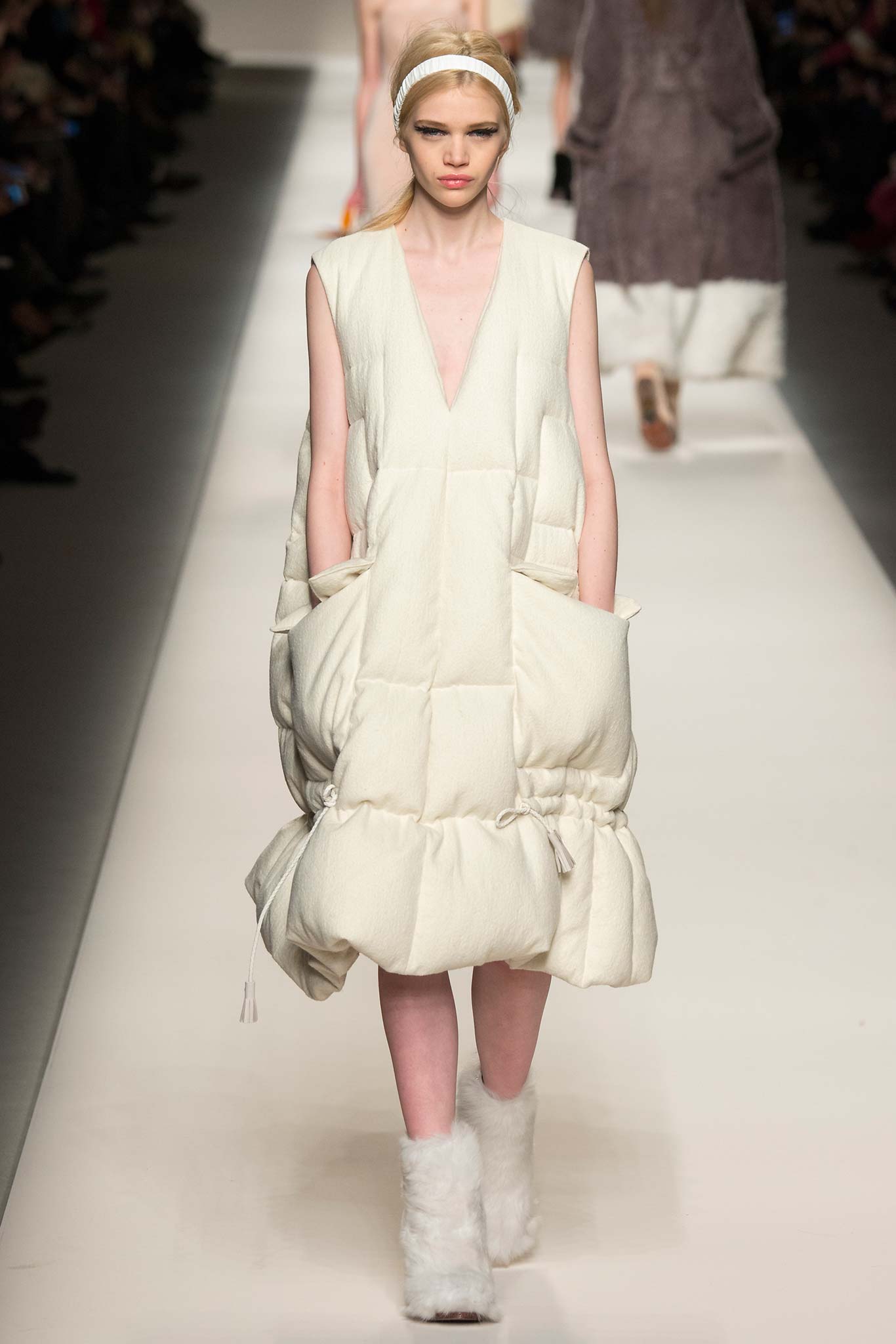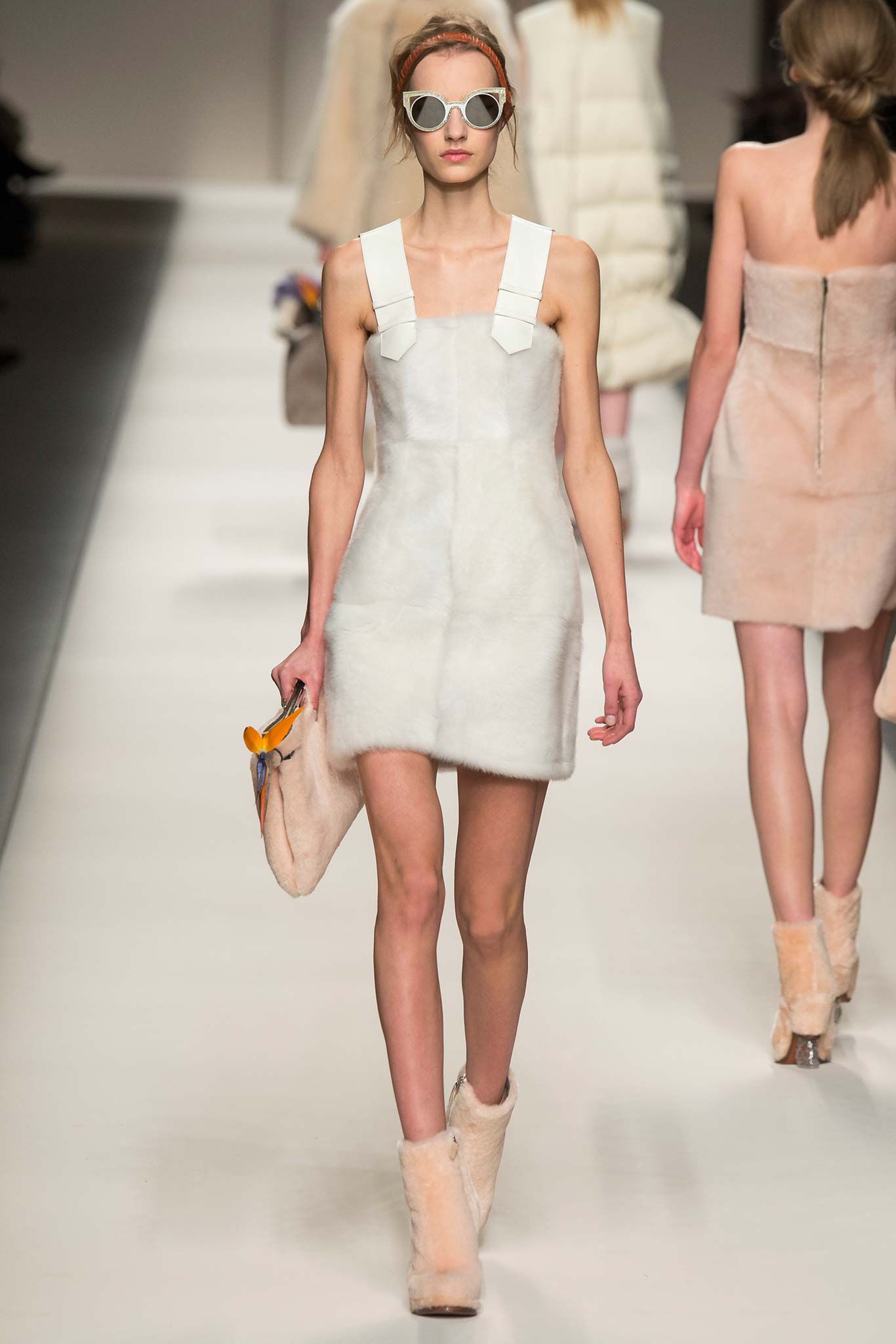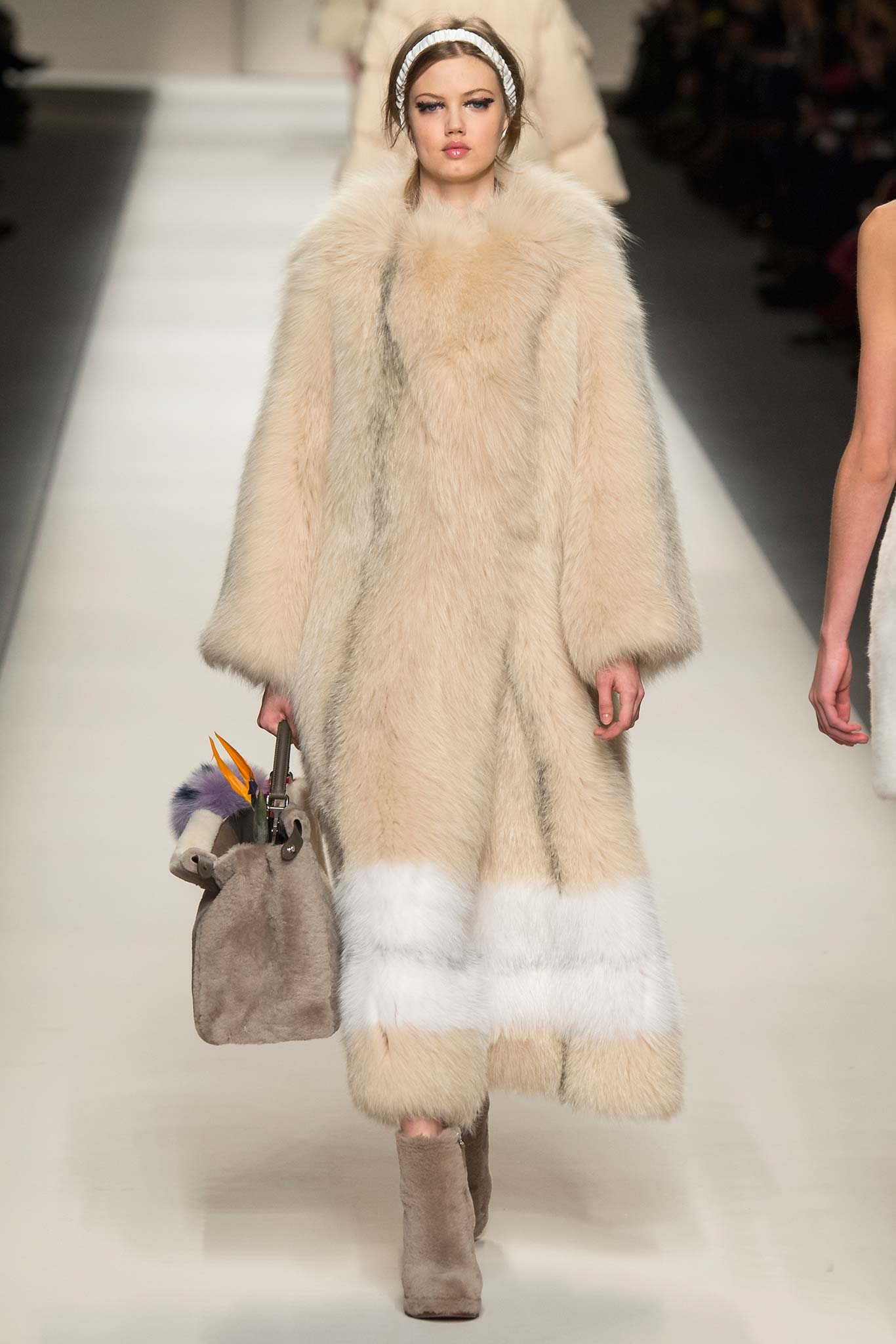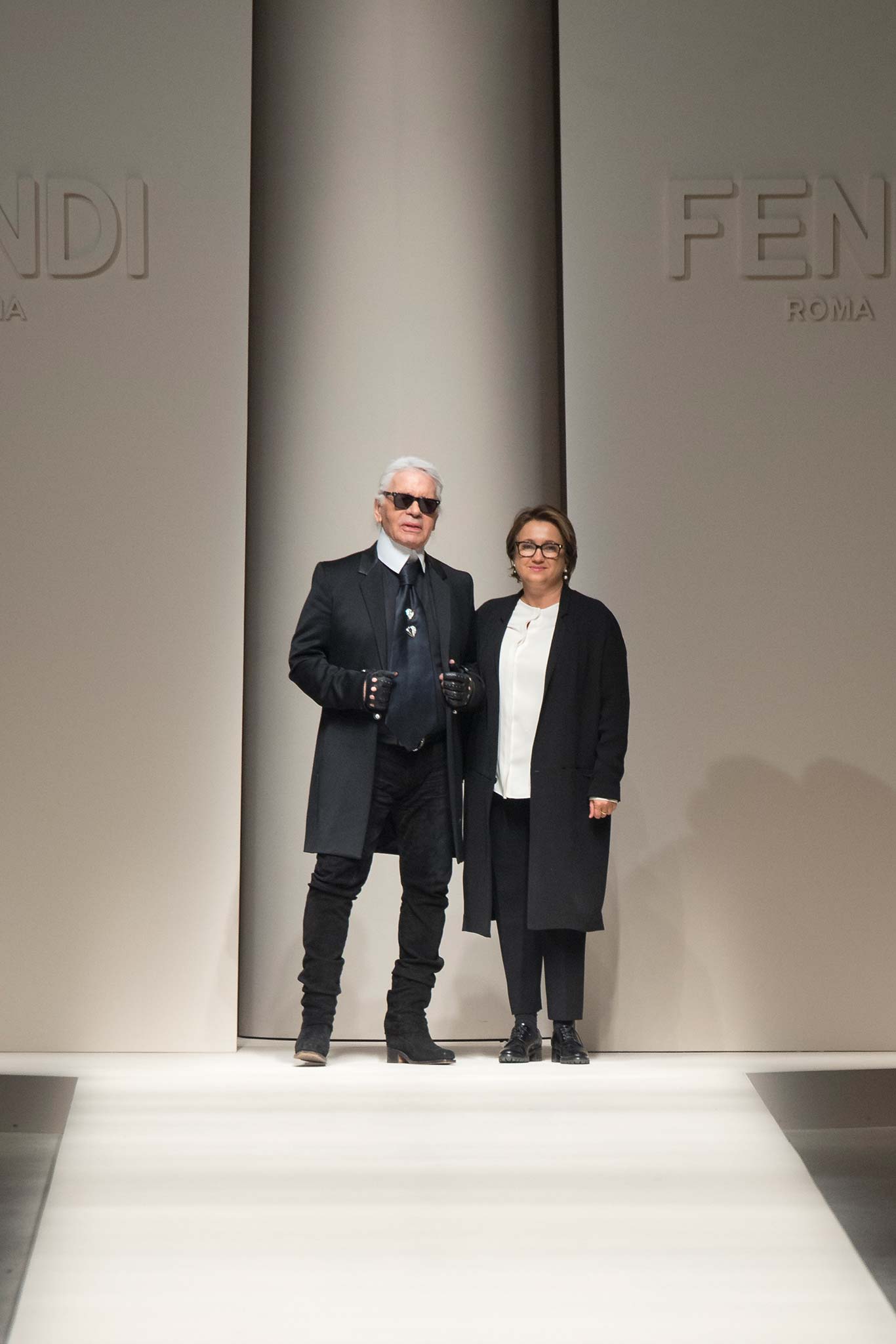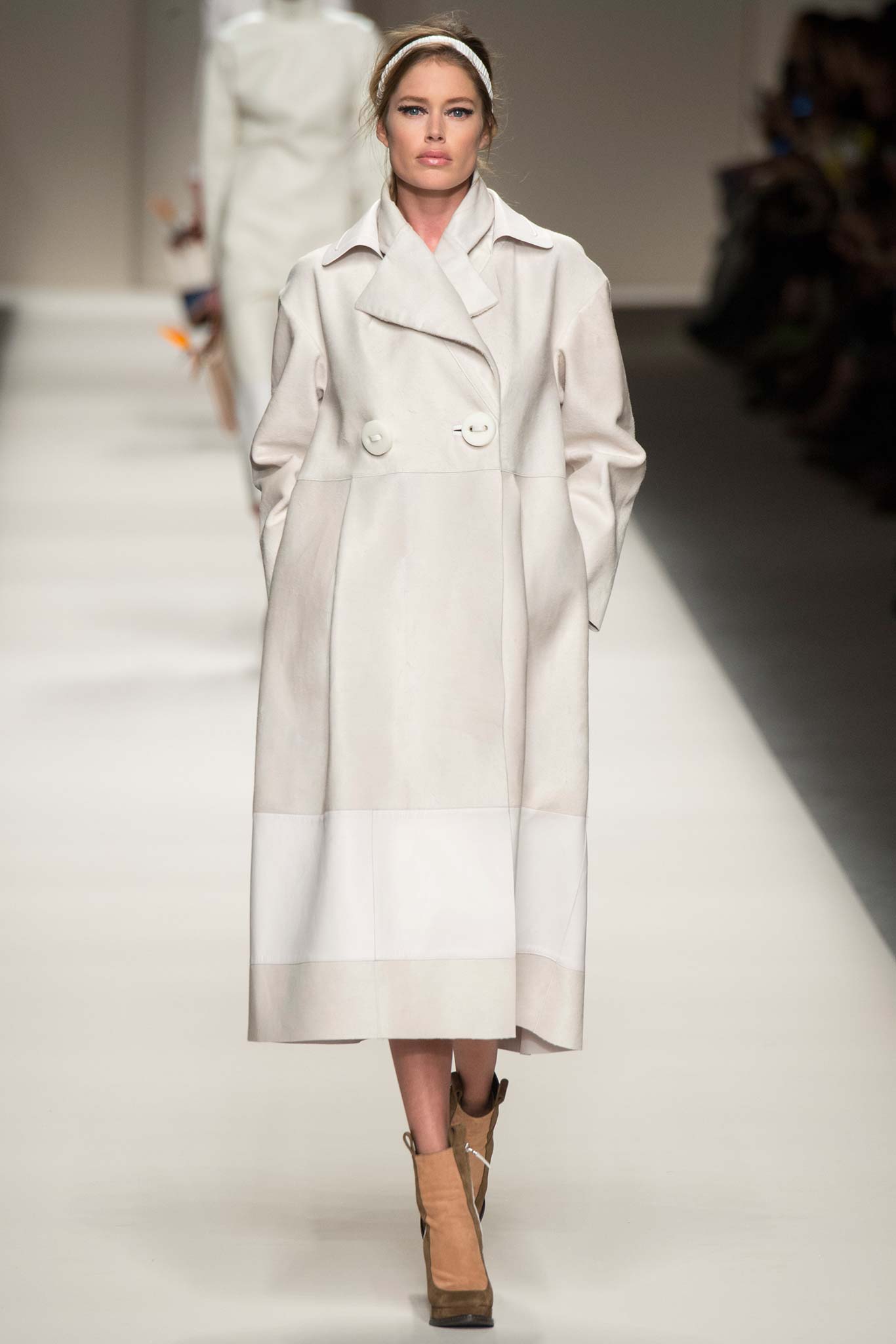
FENDI AUTUMN/WINTER 2015-16 READY-TO-WEAR MILAN FASHION WEEK
It was only after Karl Lagerfeld had designed the latest Fendi collection, featuring a new kind of construction based on panels of leather, that it occurred to him he’d been once again inspired by the architecture of the Palazzo della Civiltà Italiana, the masterpiece of Fascist architecture that is Fendi’s new headquarters in Rome. The same style of building surrounds the empty, eerie piazzas in the paintings of Giorgio de Chirico. He got a name-check, too.
The panels were strange appurtenances, molding the legs of the models like an abstract apron (actress and erstwhile farm girl Noomi Rapace was reminded of a blacksmith), but Lagerfeld was very taken with them as a way to communicate a longer, more linear proposal. He wanted to move well away from the tendency toward girlie-ness that he’d been bothered by in Fendi’s Spring offering. There was no sign of soft, romantic orchids. Instead, every model’s bag spouted a hard, beaky bird-of-paradise flower. “Pleasant aggressivity,” said Lagerfeld with a smile.
But at the same time, he talked about the idea of protection, one more designer to acknowledge the toughness of the times. The panels certainly reflected such thinking. So did the substantial, spectacular coats, tucked at the waist to give them a full-skirted flare, and falling to mid-calf. There were also tabard tops (Lagerfeld compared them with the safety vests worn by policemen) and a clutch of oversize padded pieces that looked like repurposed duvets—looks you could truly live in. Their puffa-ness was a smart counterpoint to the elongated theme, but they were also a reminder of how rarely a Fendi collection relates to anything else that is happening in fashion. The walls of the show space today were lined with enormous reproductions of abstracts by the early-20th-century Swiss artist Sophie Taeuber-Arp. (They were also used as prints in the collection.) What Lagerfeld has always loved about Taeuber-Arp’s work is that, even though she was painting during a time of great artistic ferment in Europe, there wasn’t a trace of influence in her pictures. They were, in other words, completely original. In his admiration you could, perhaps, recognize aspiration.

